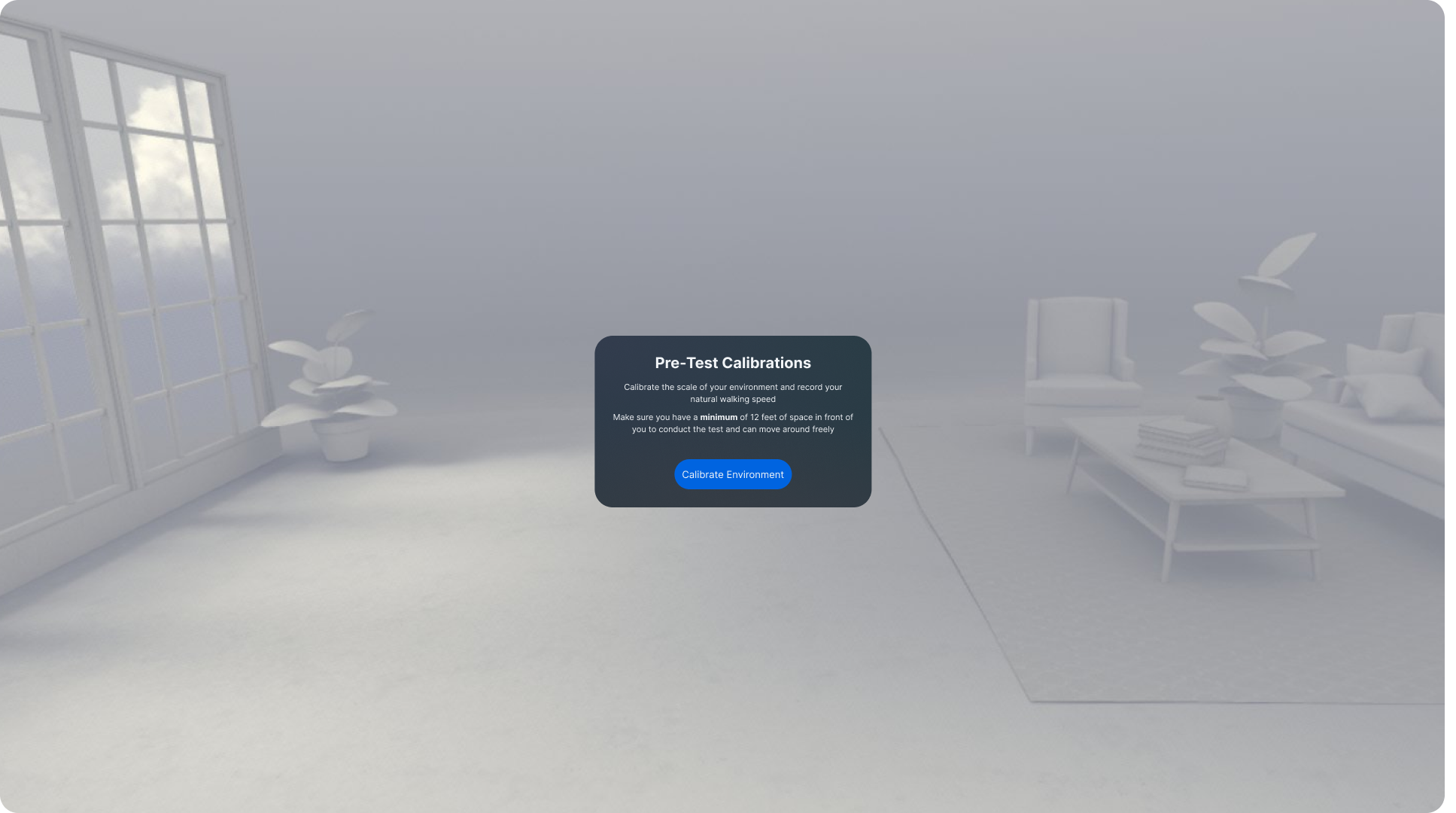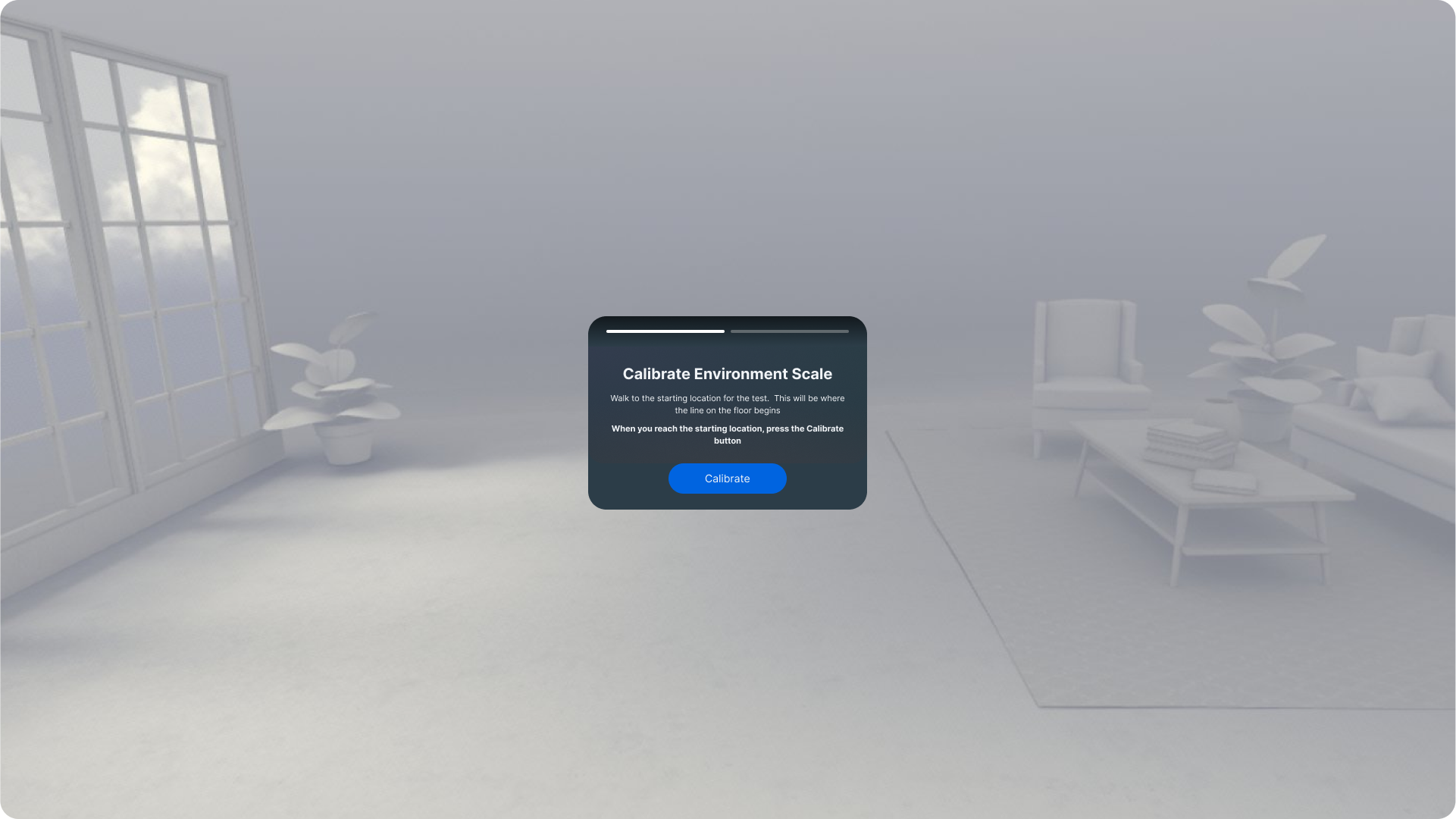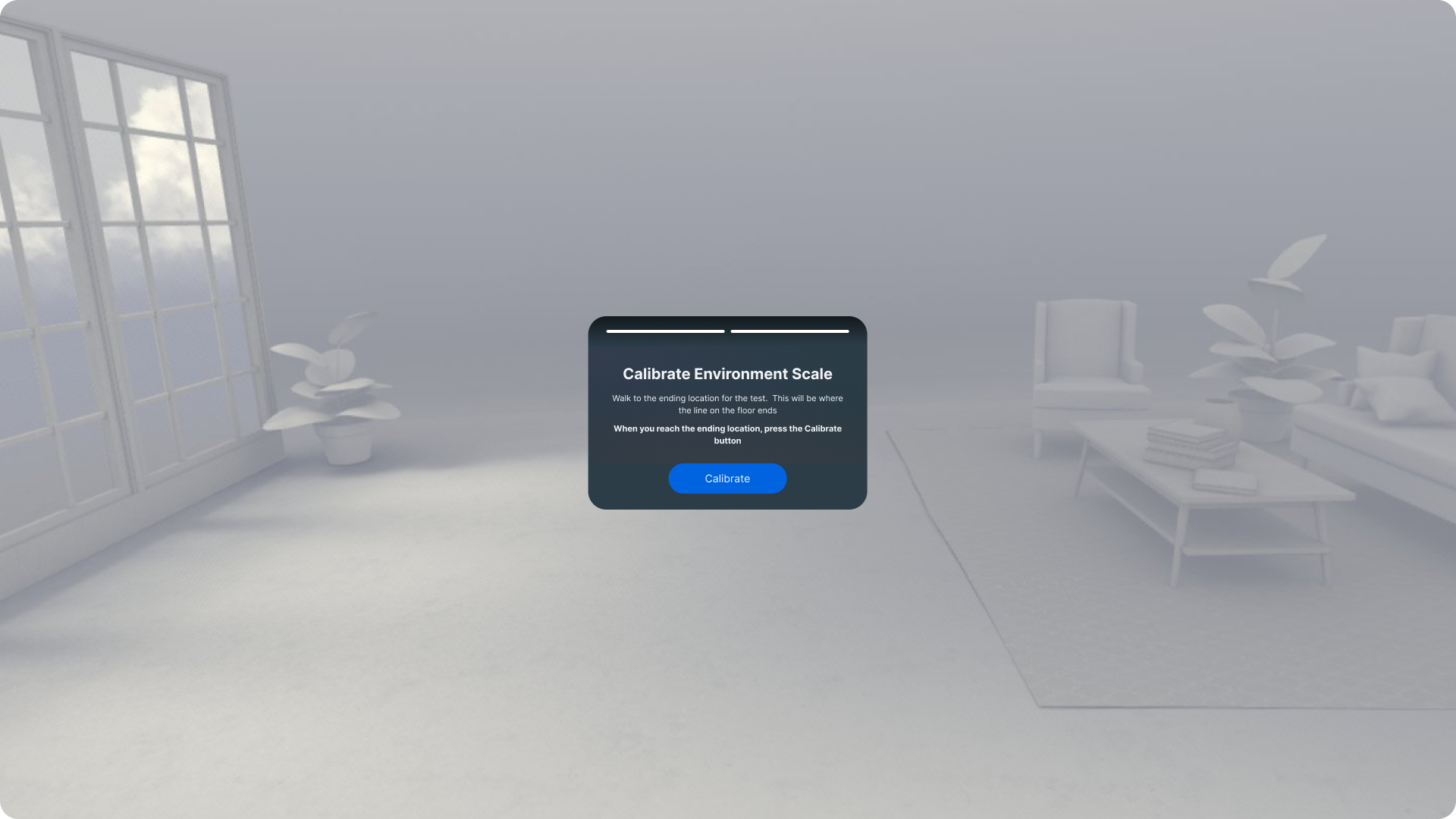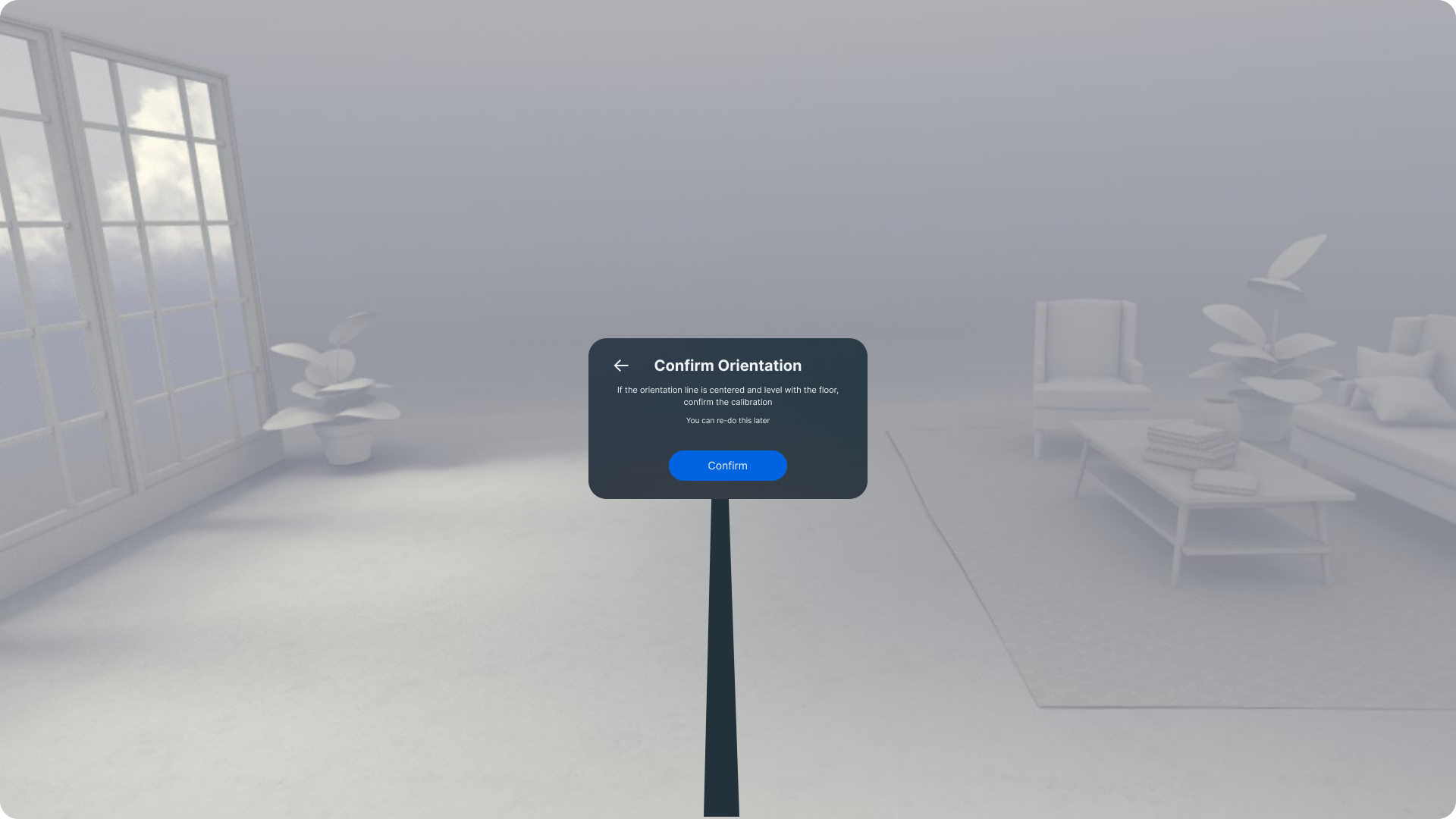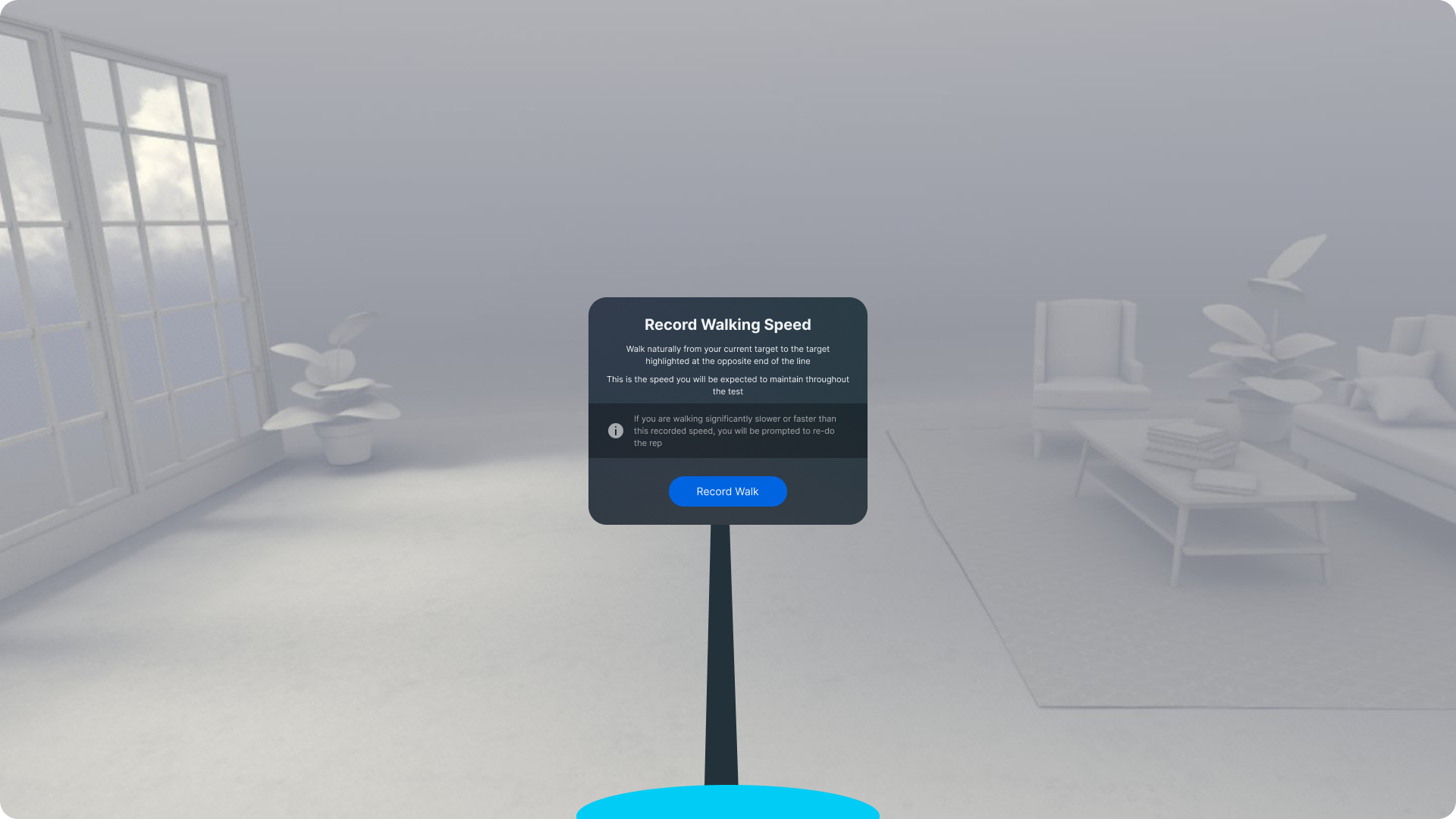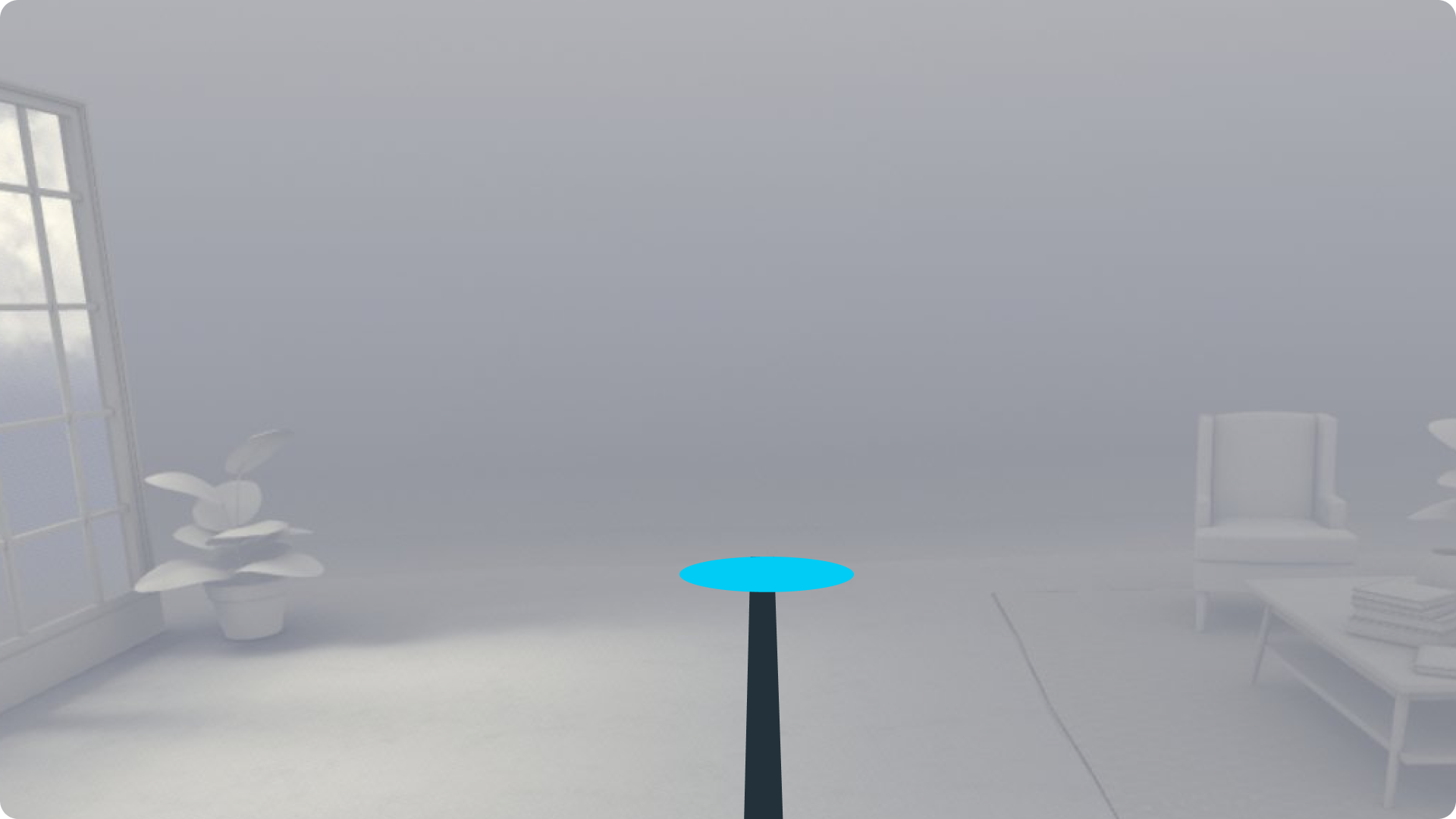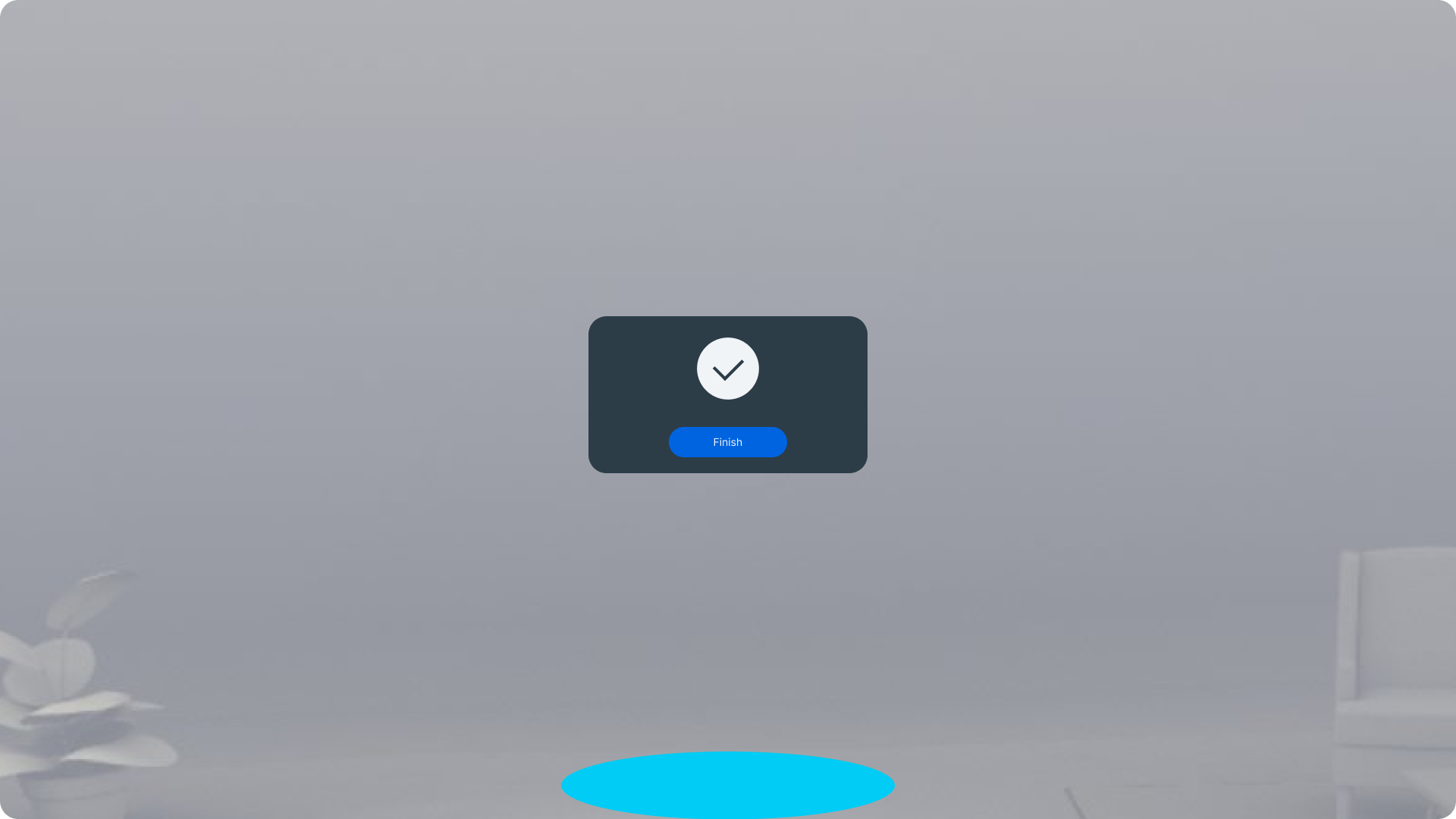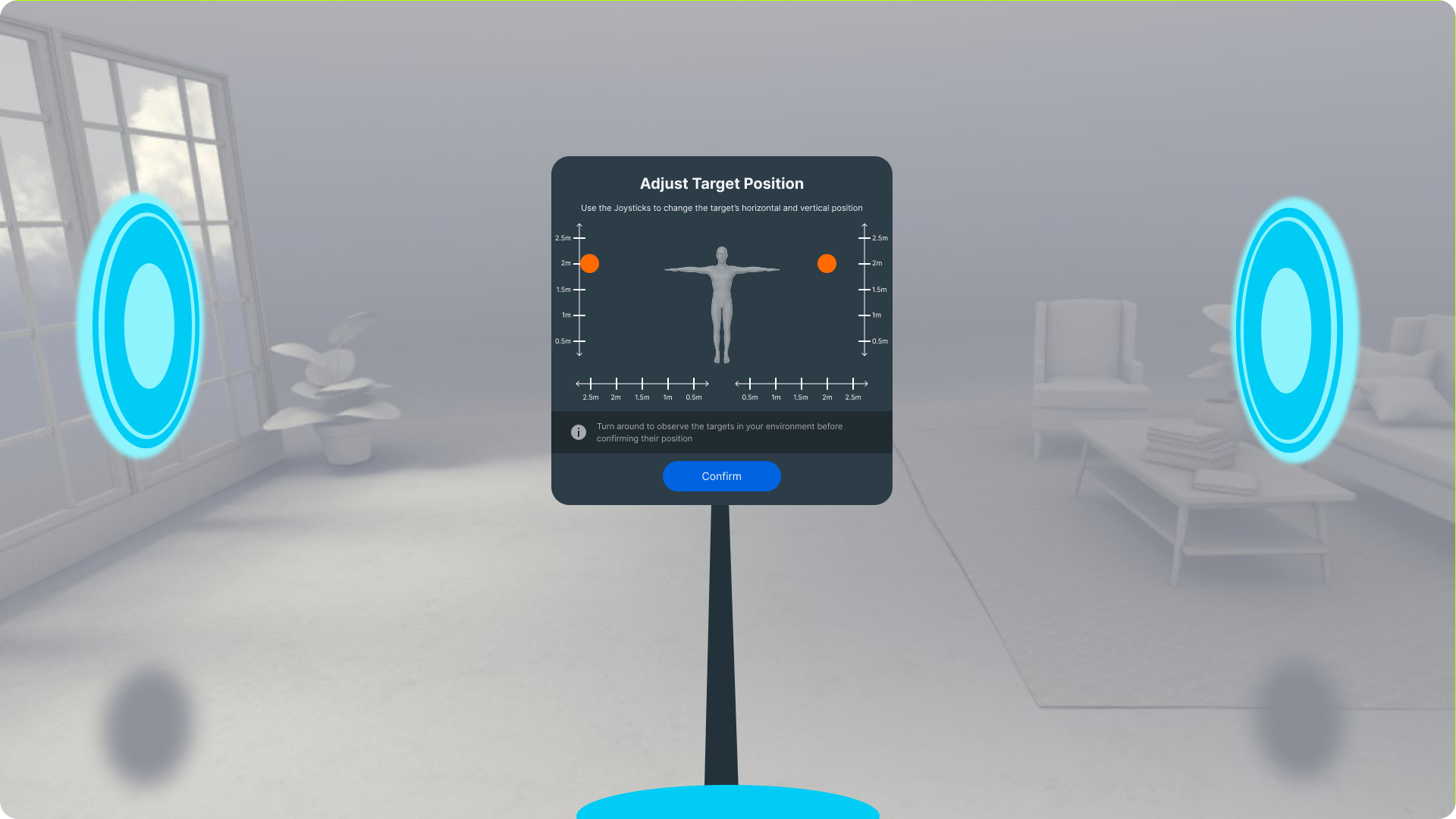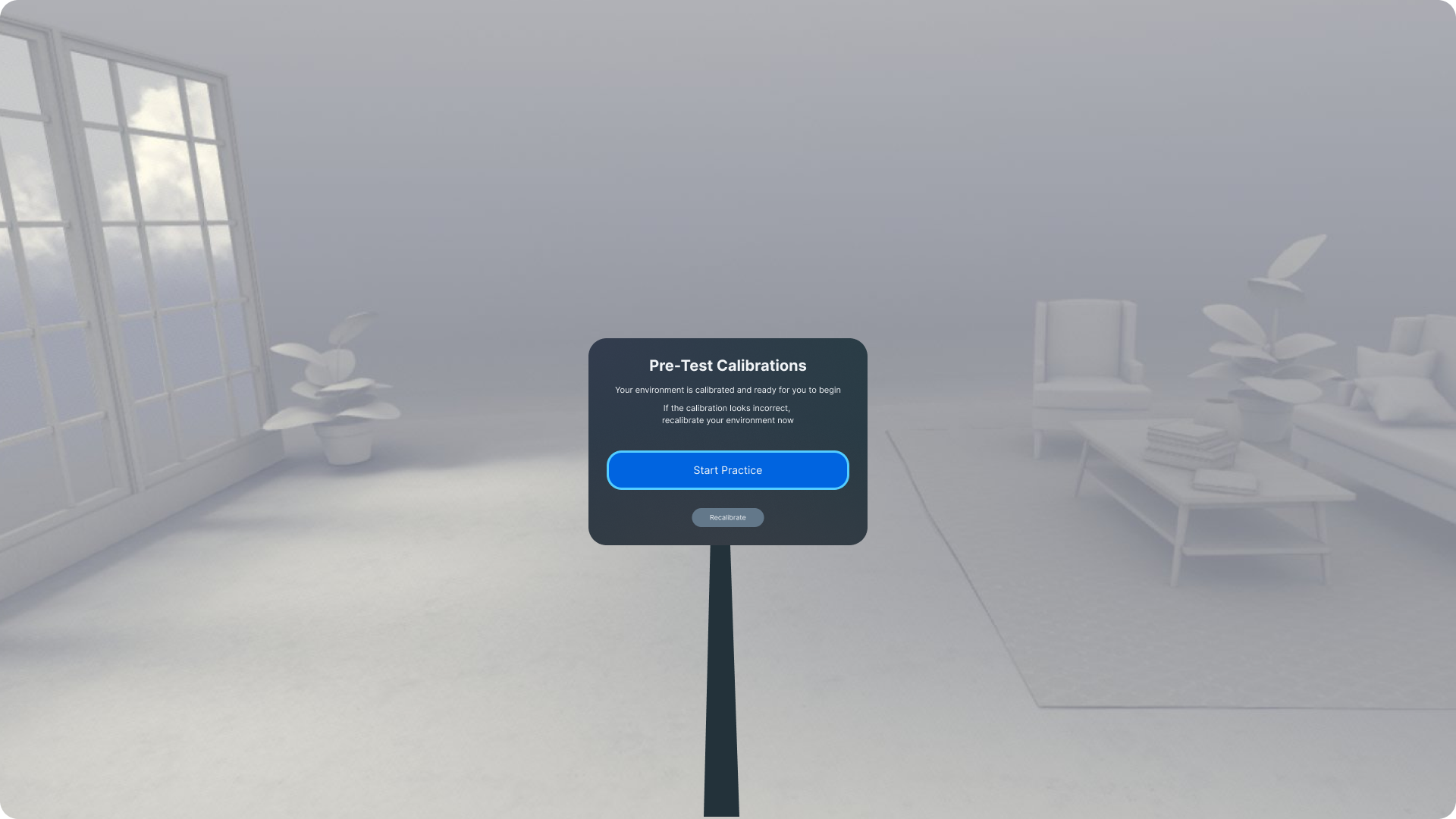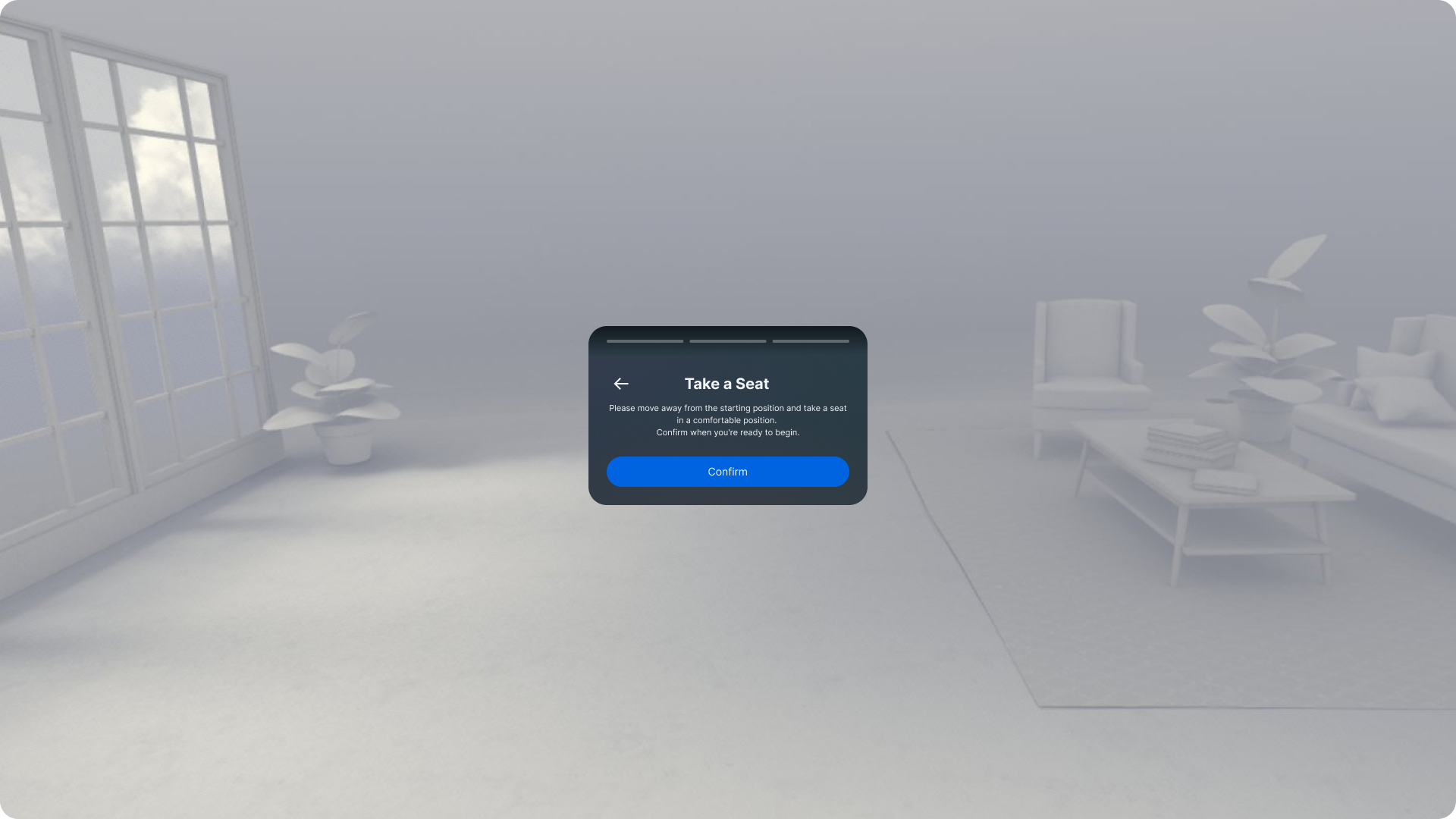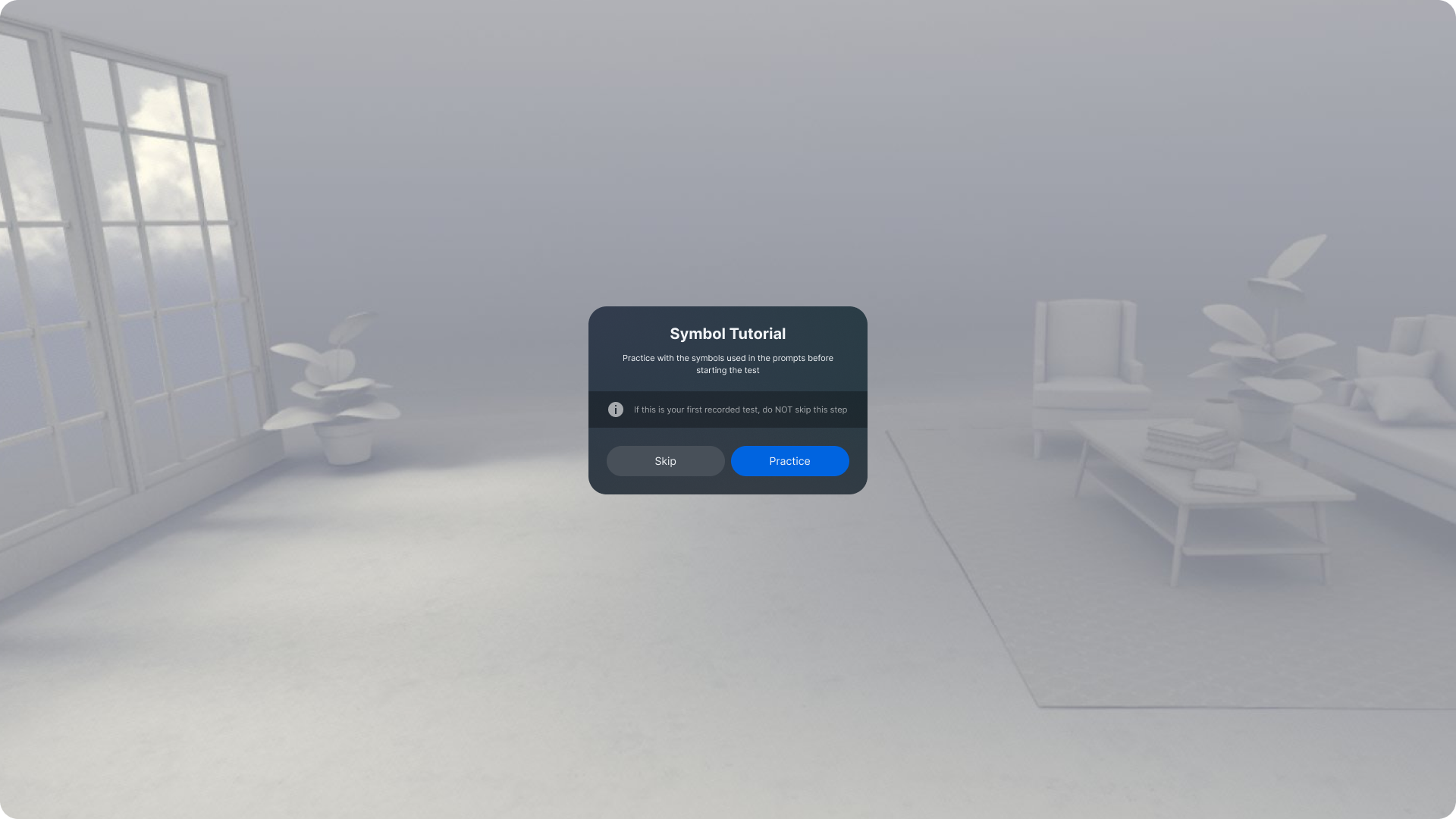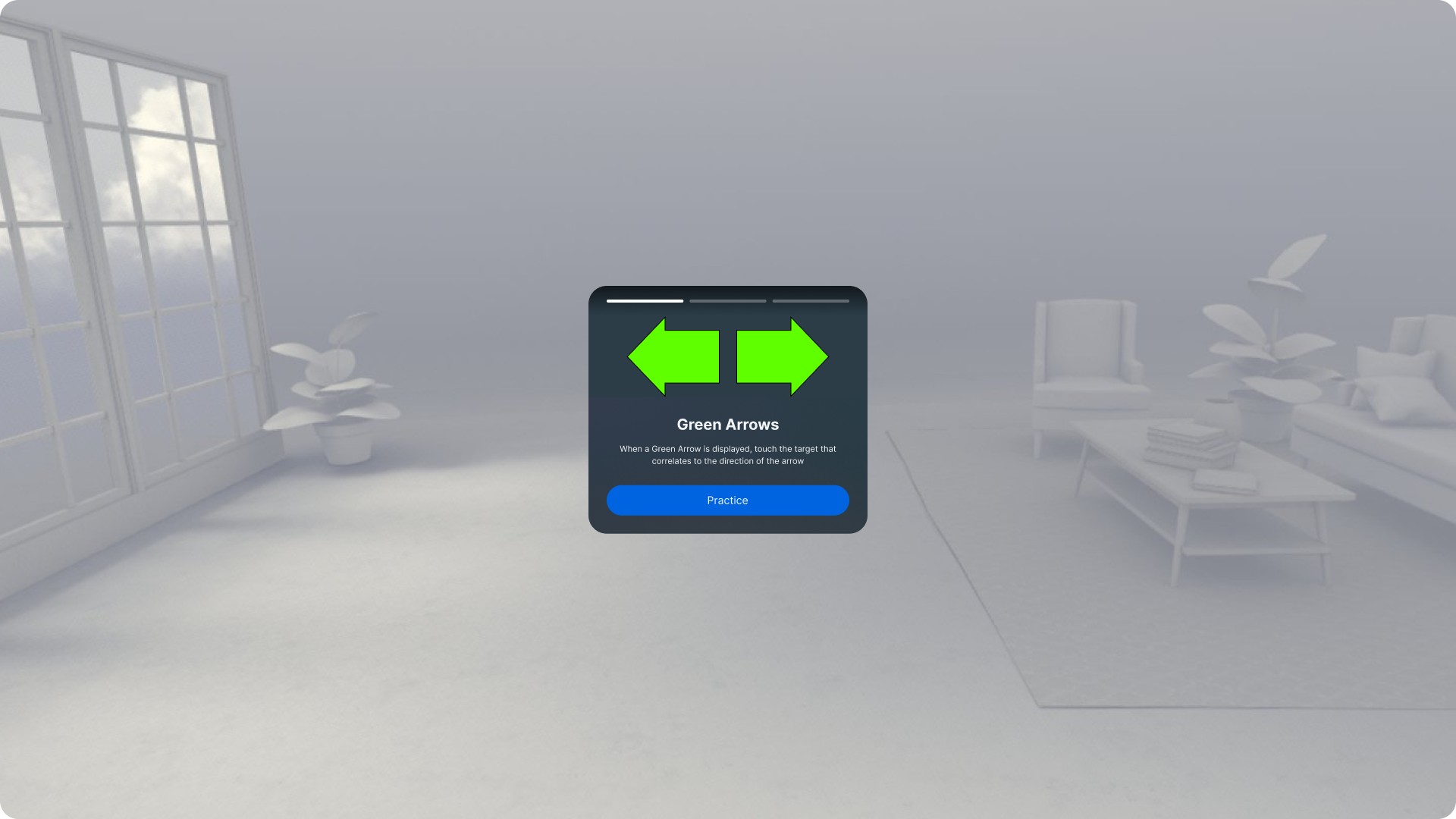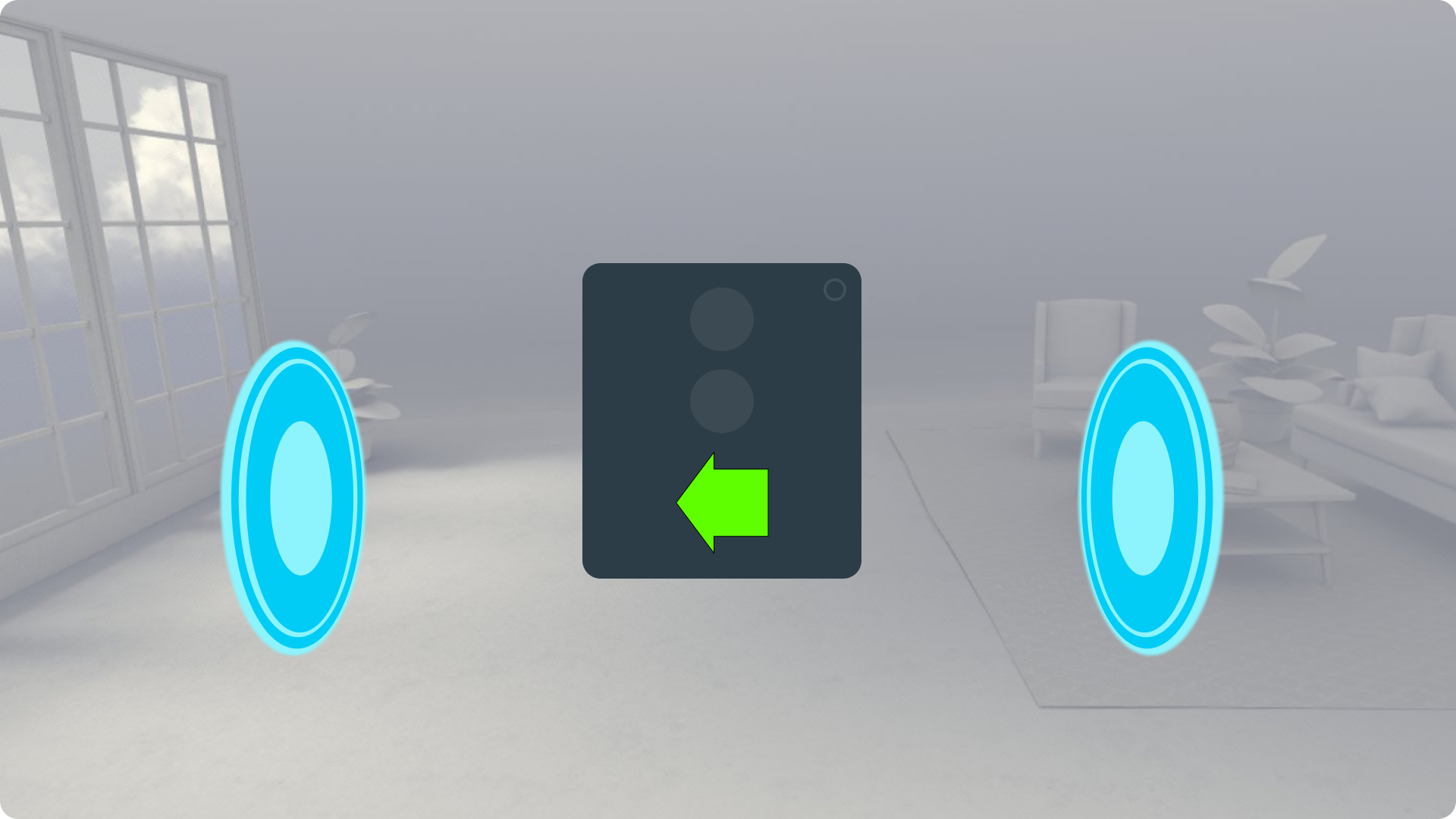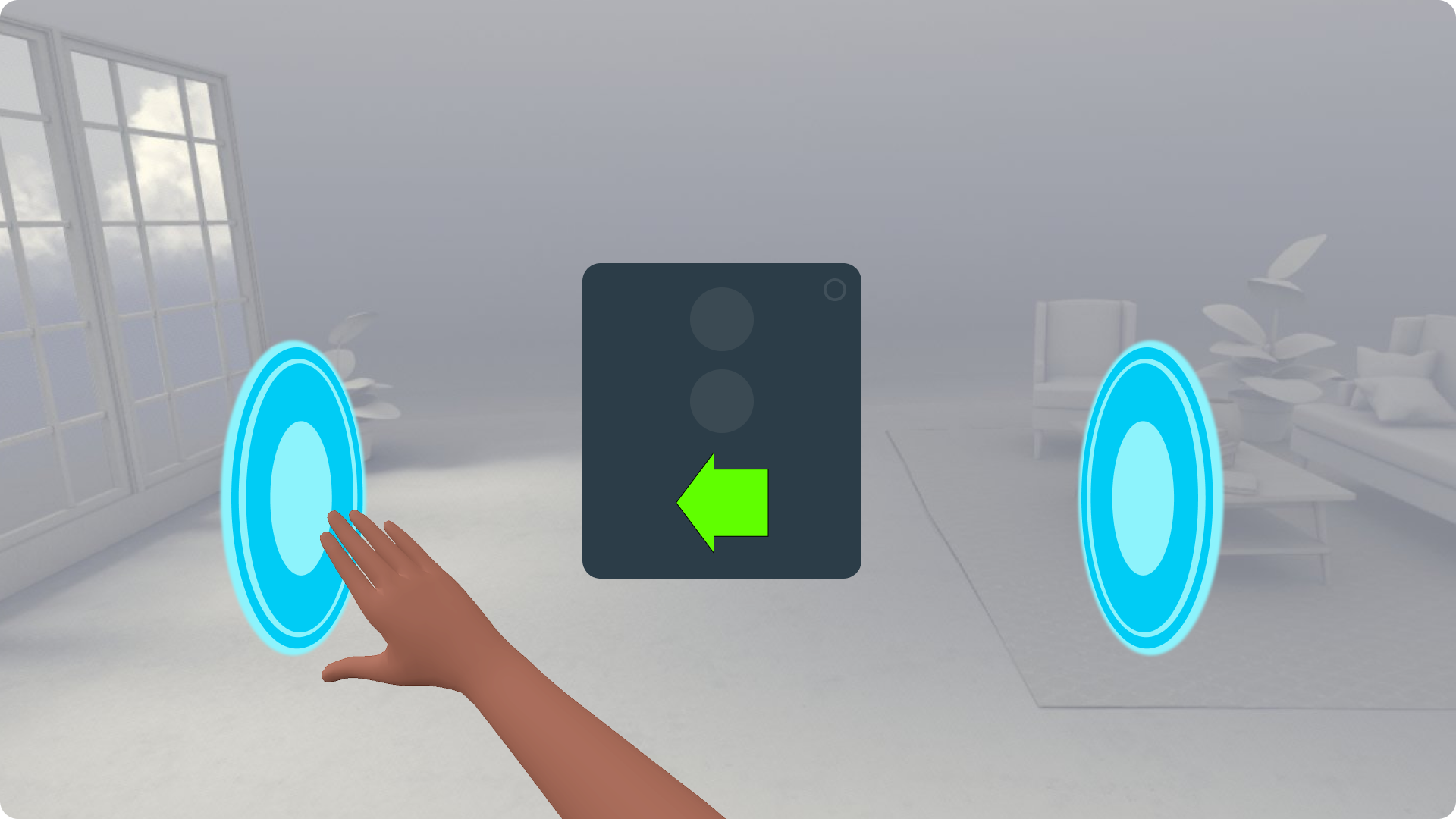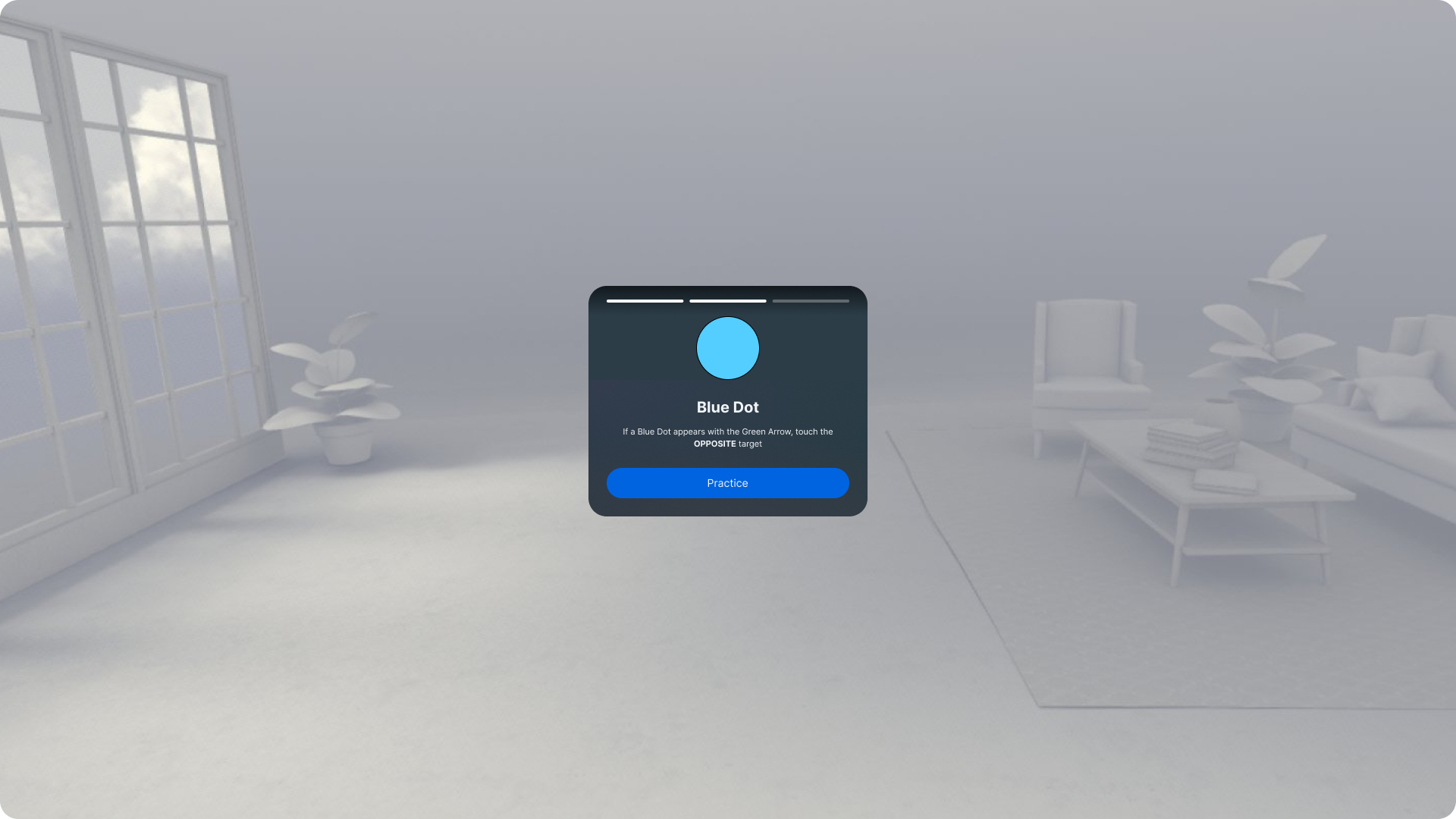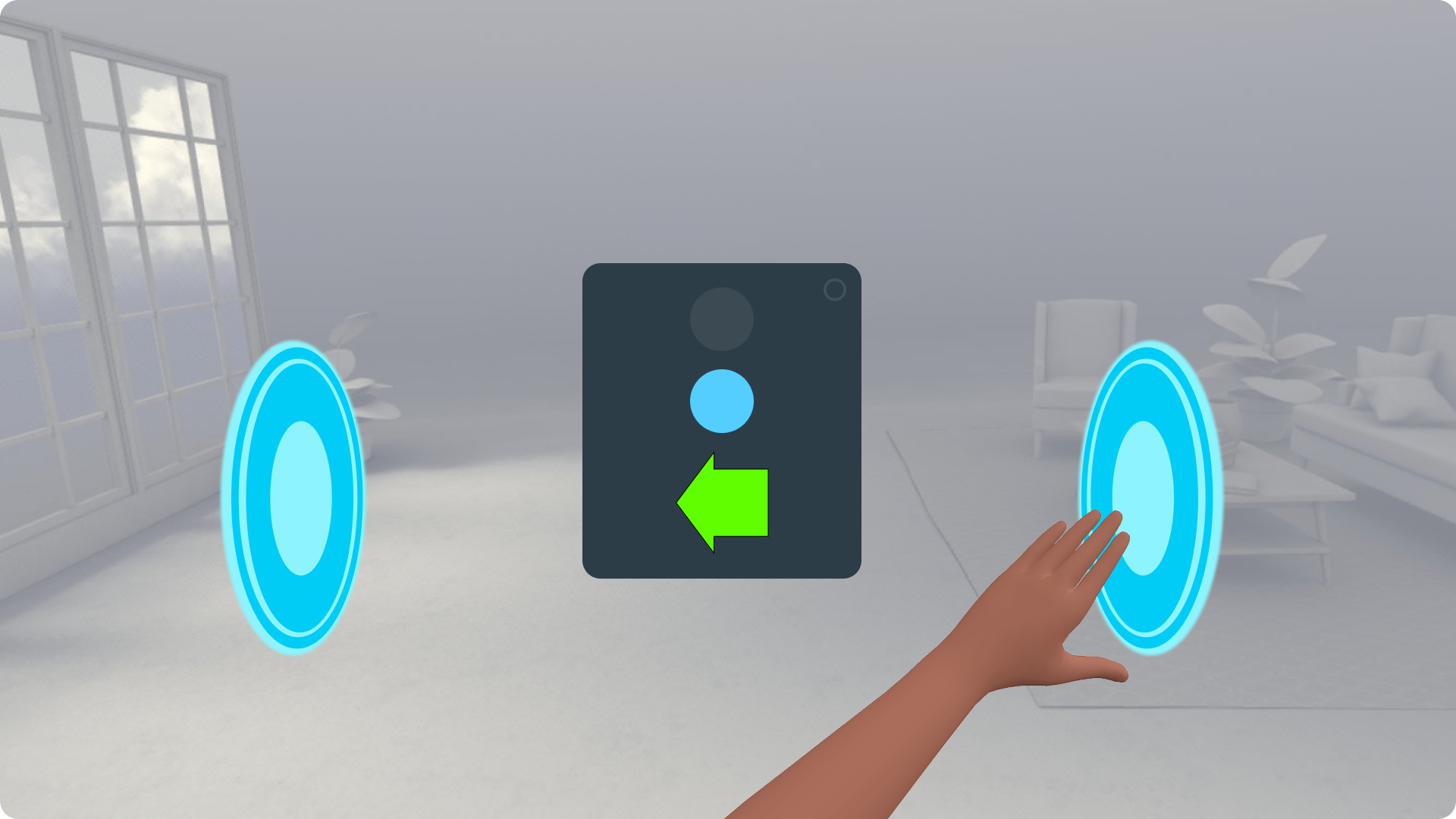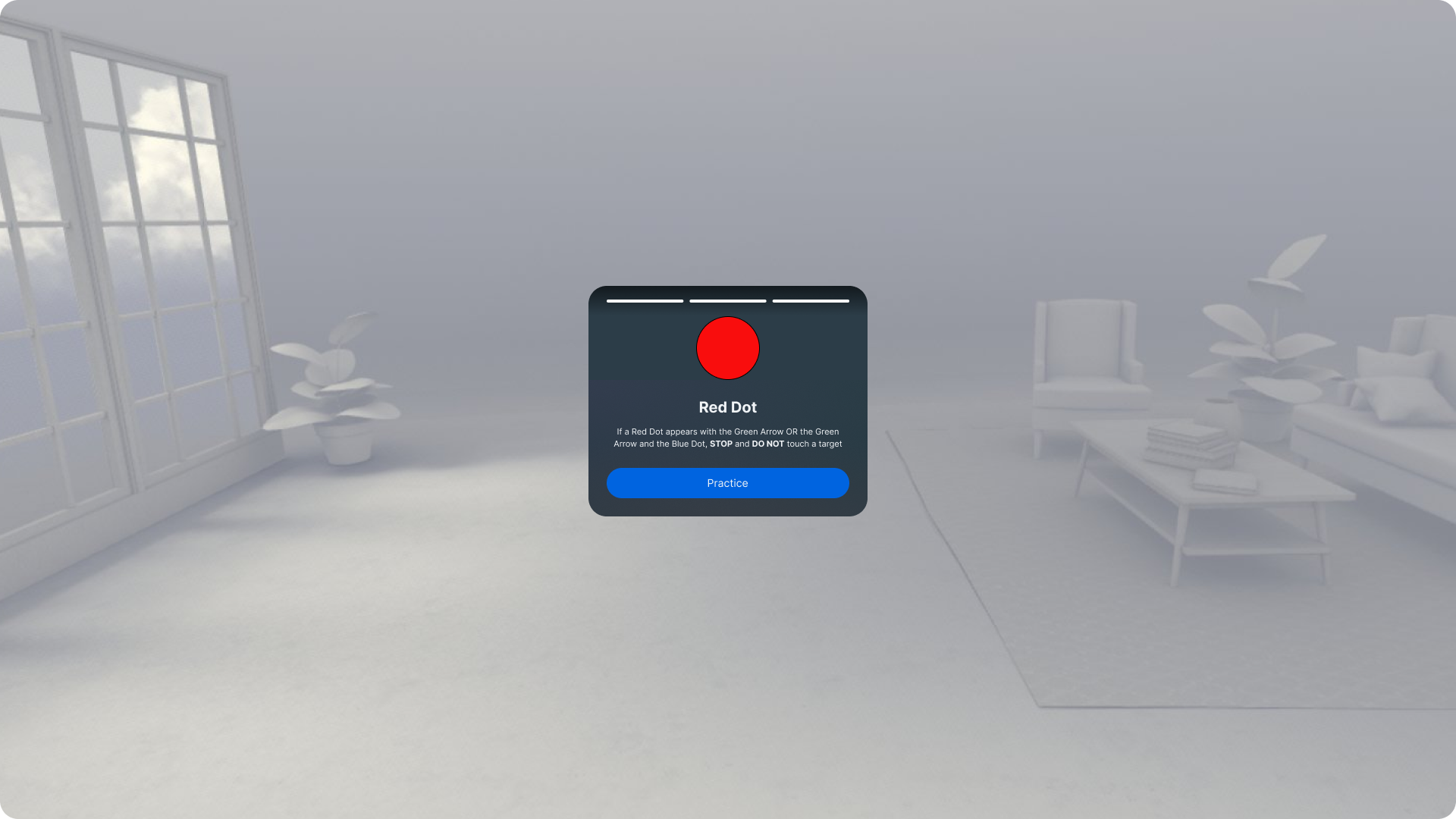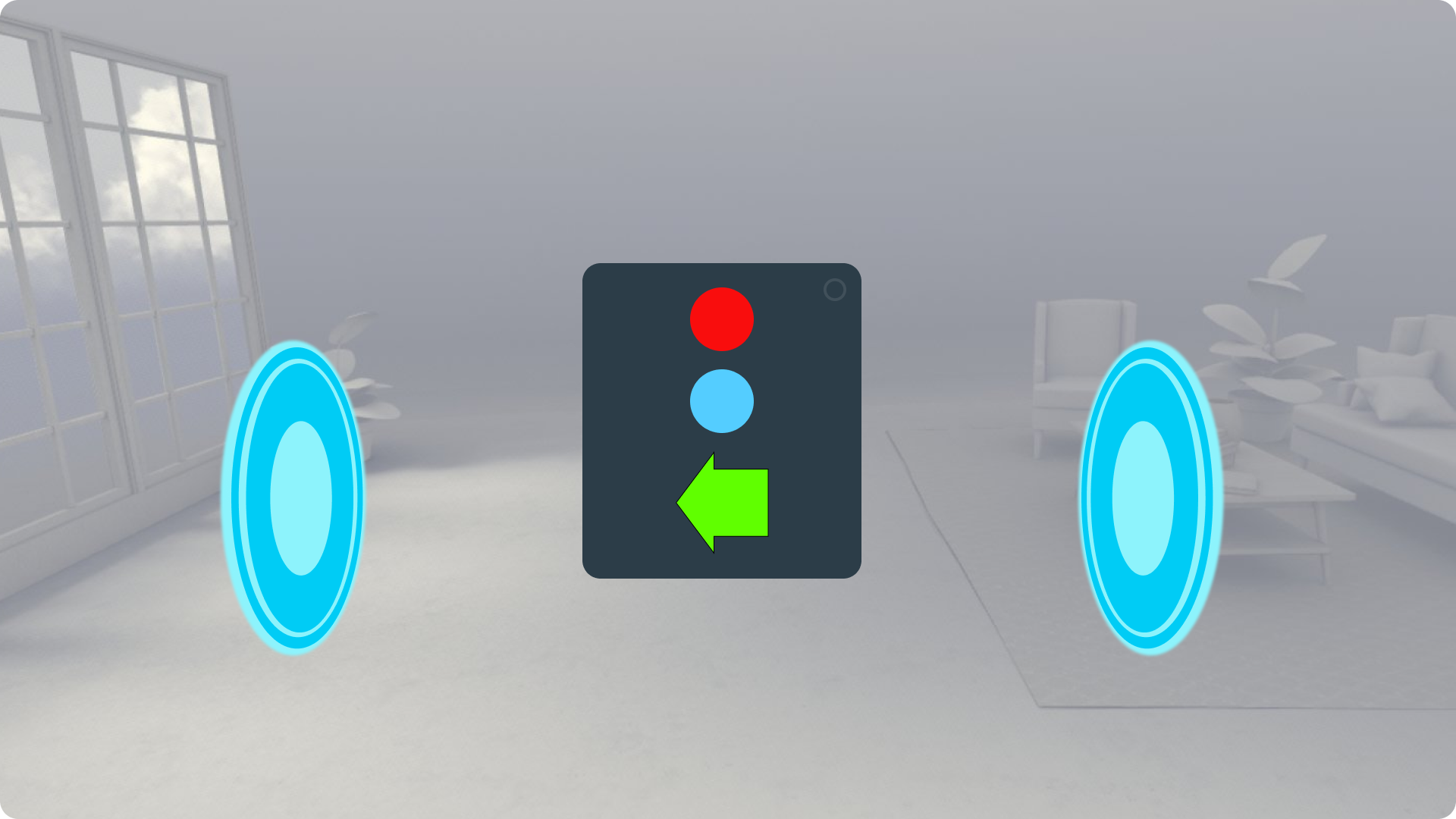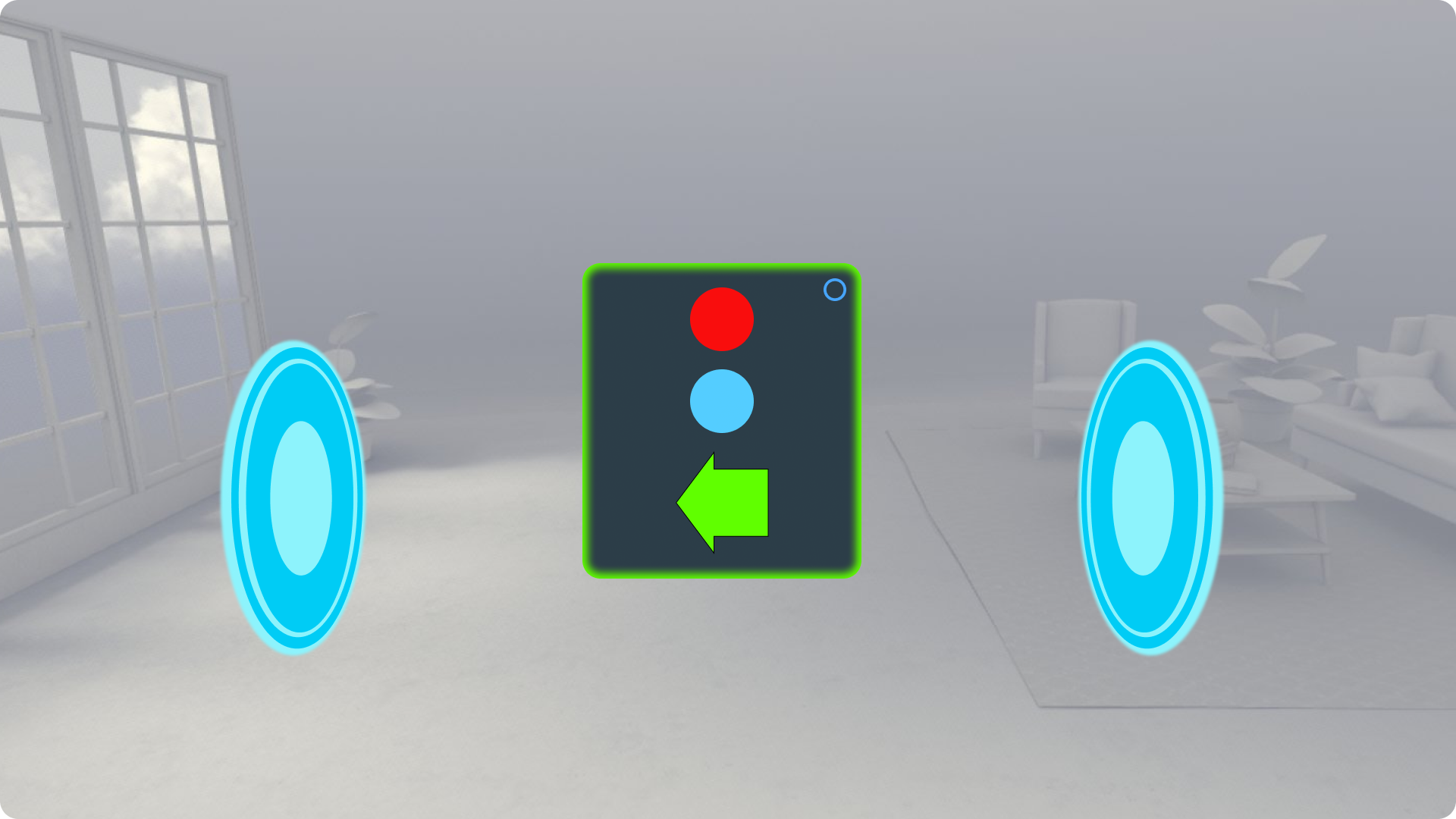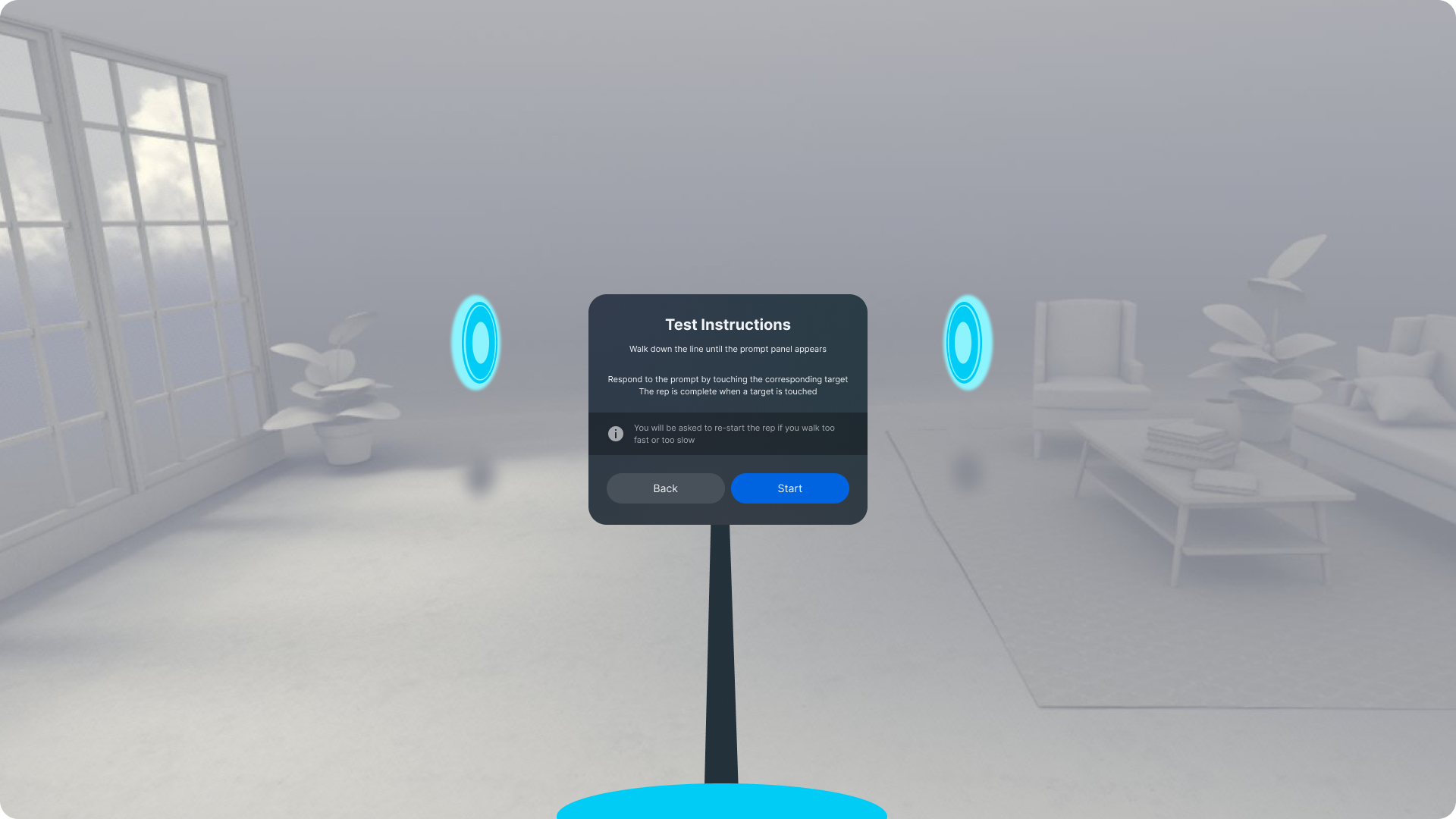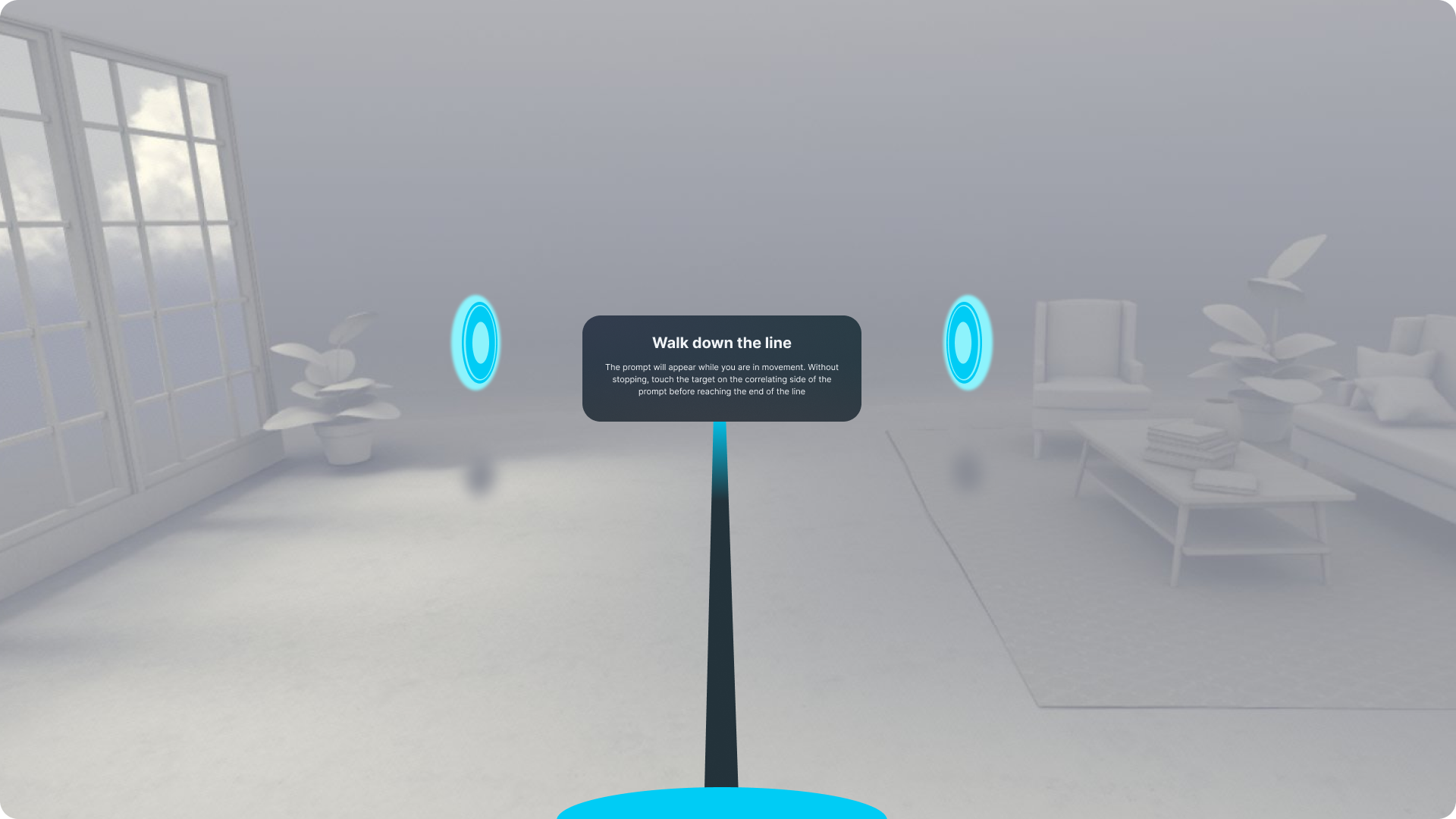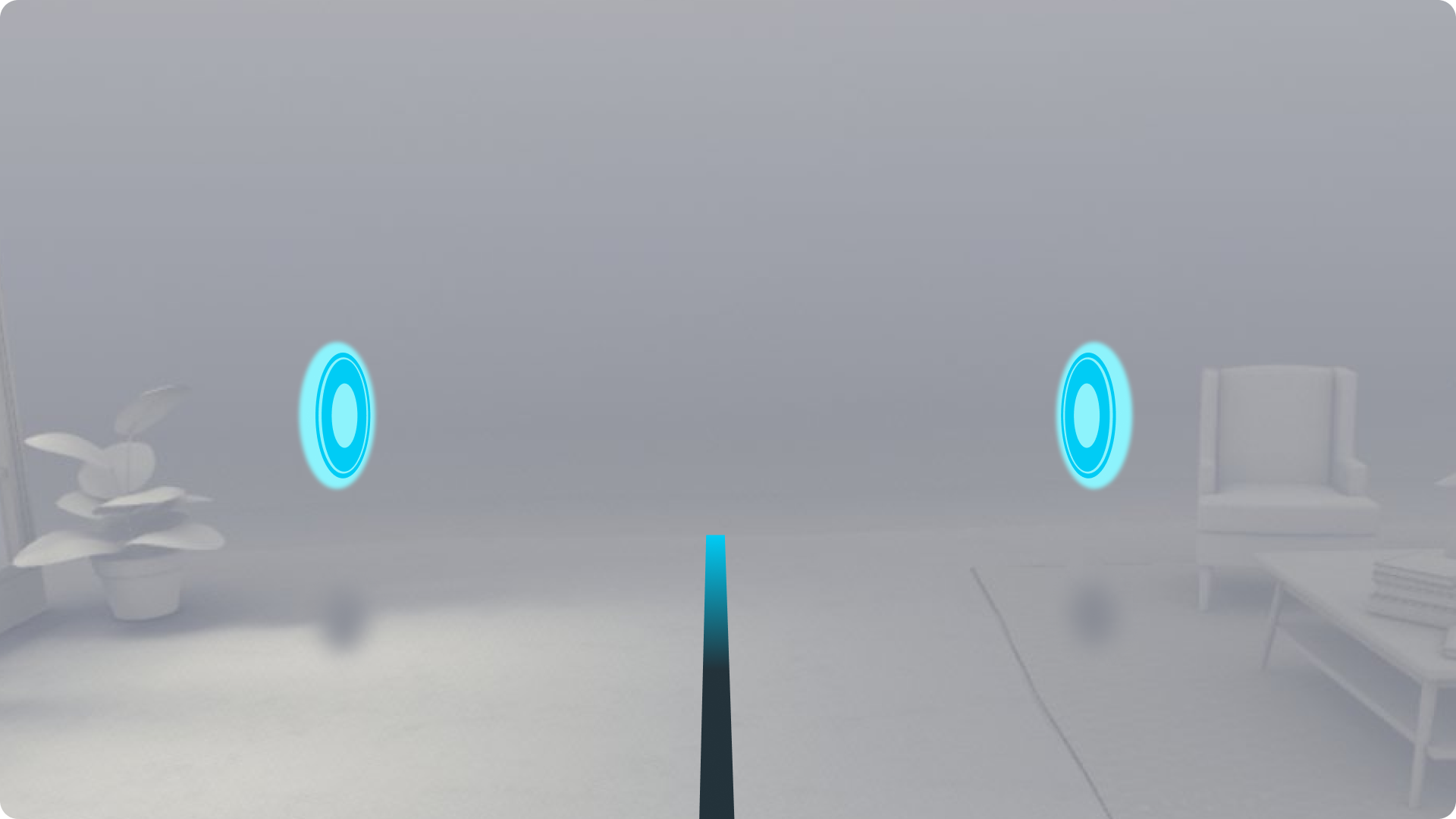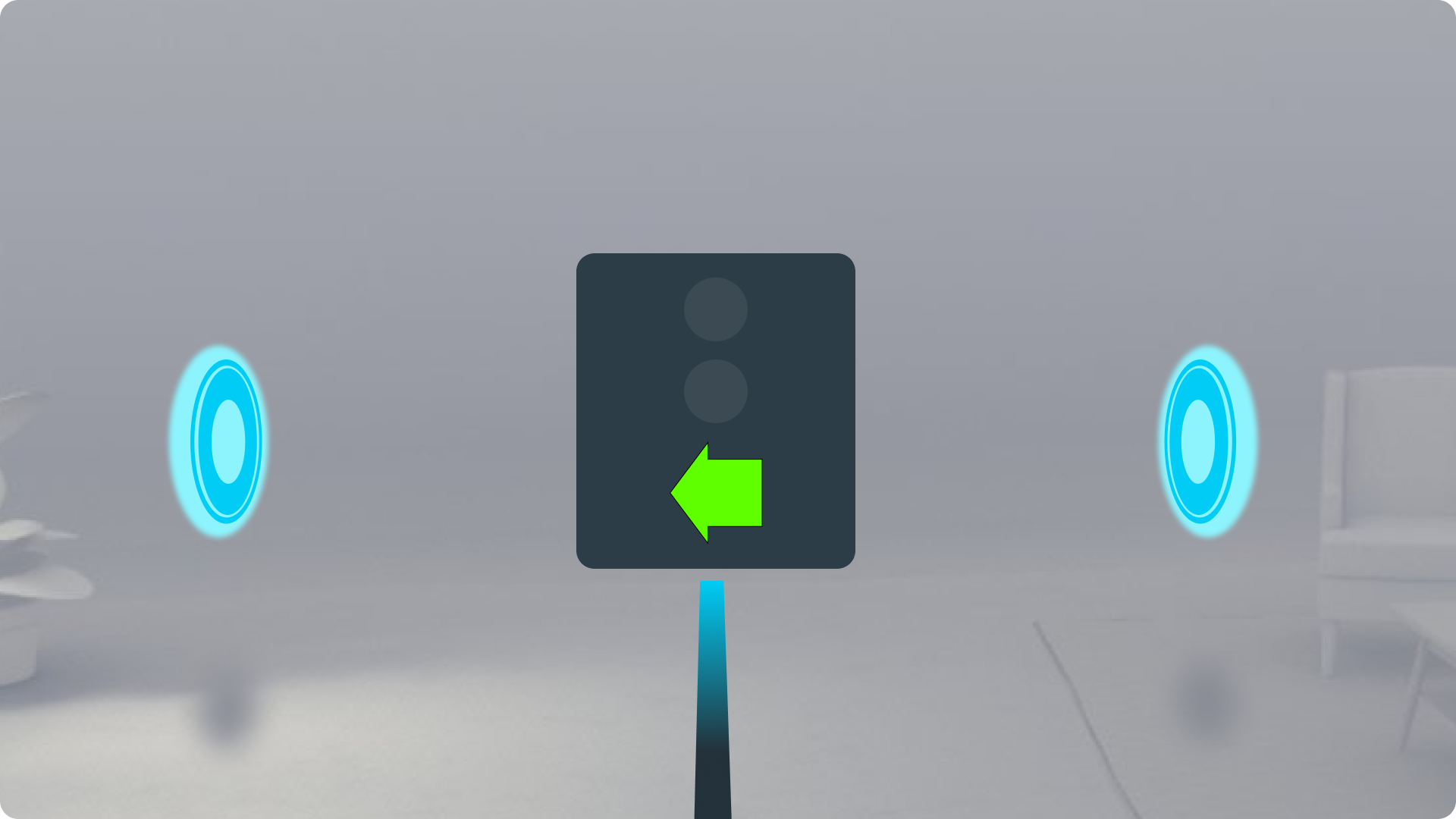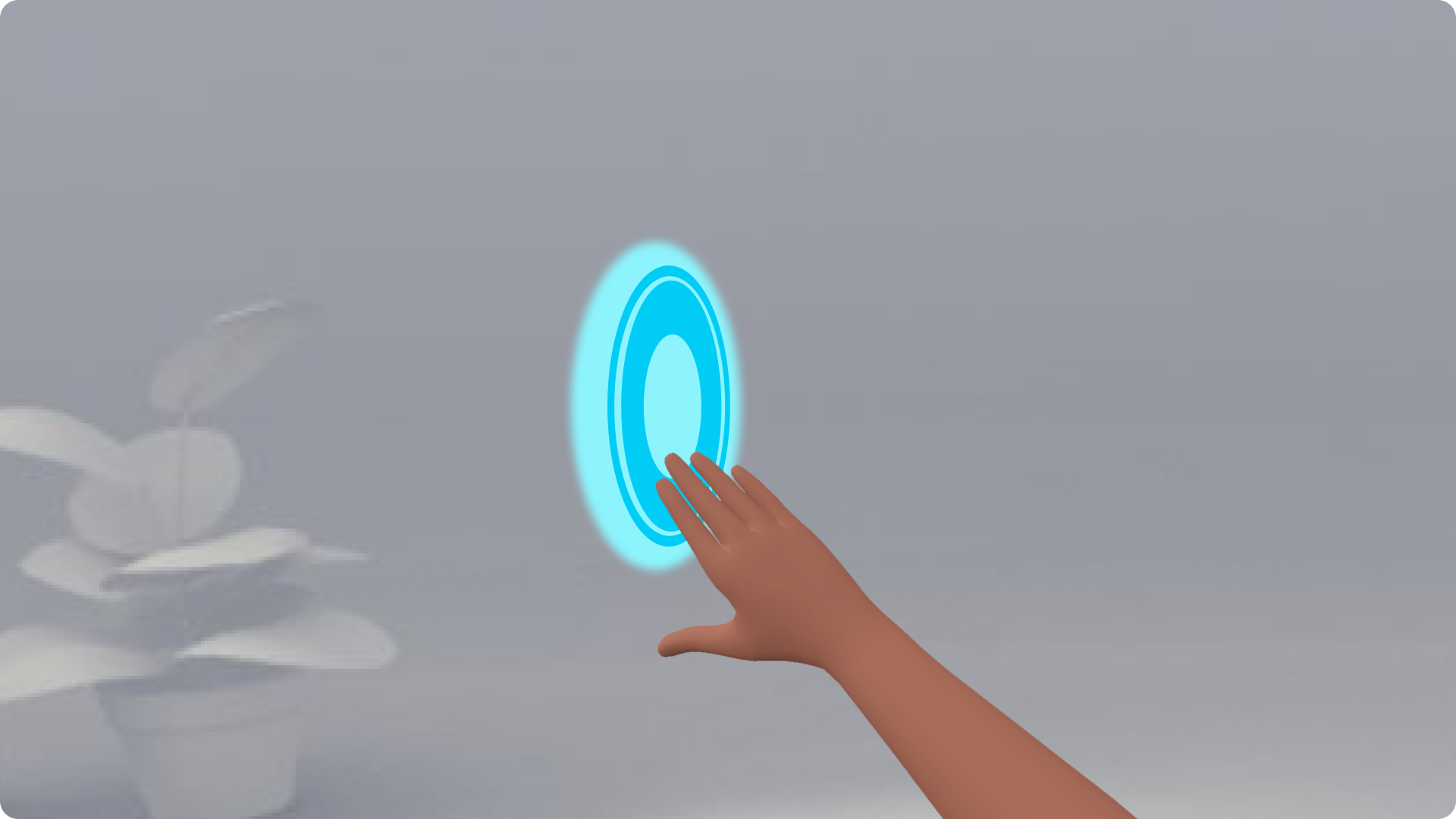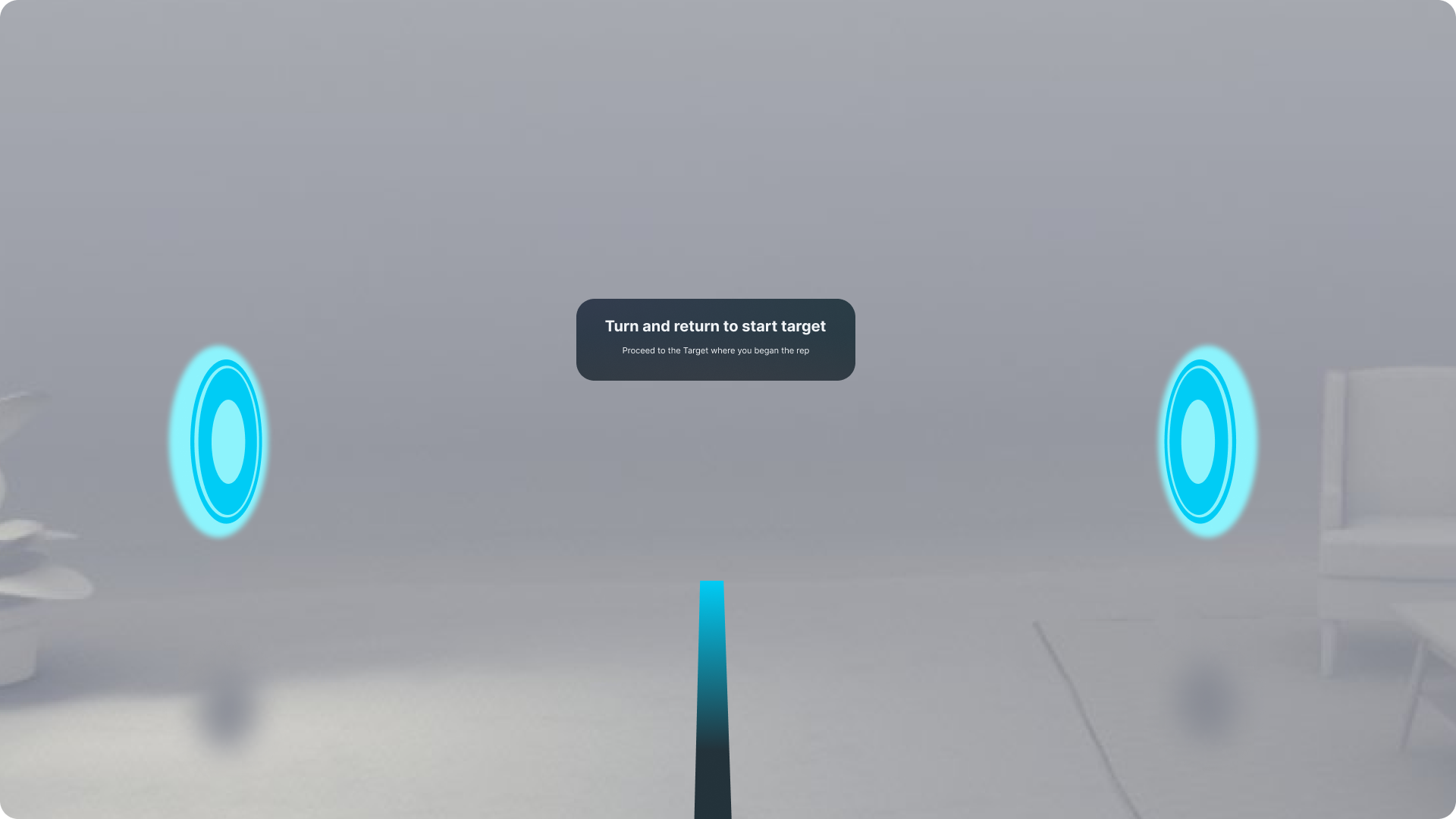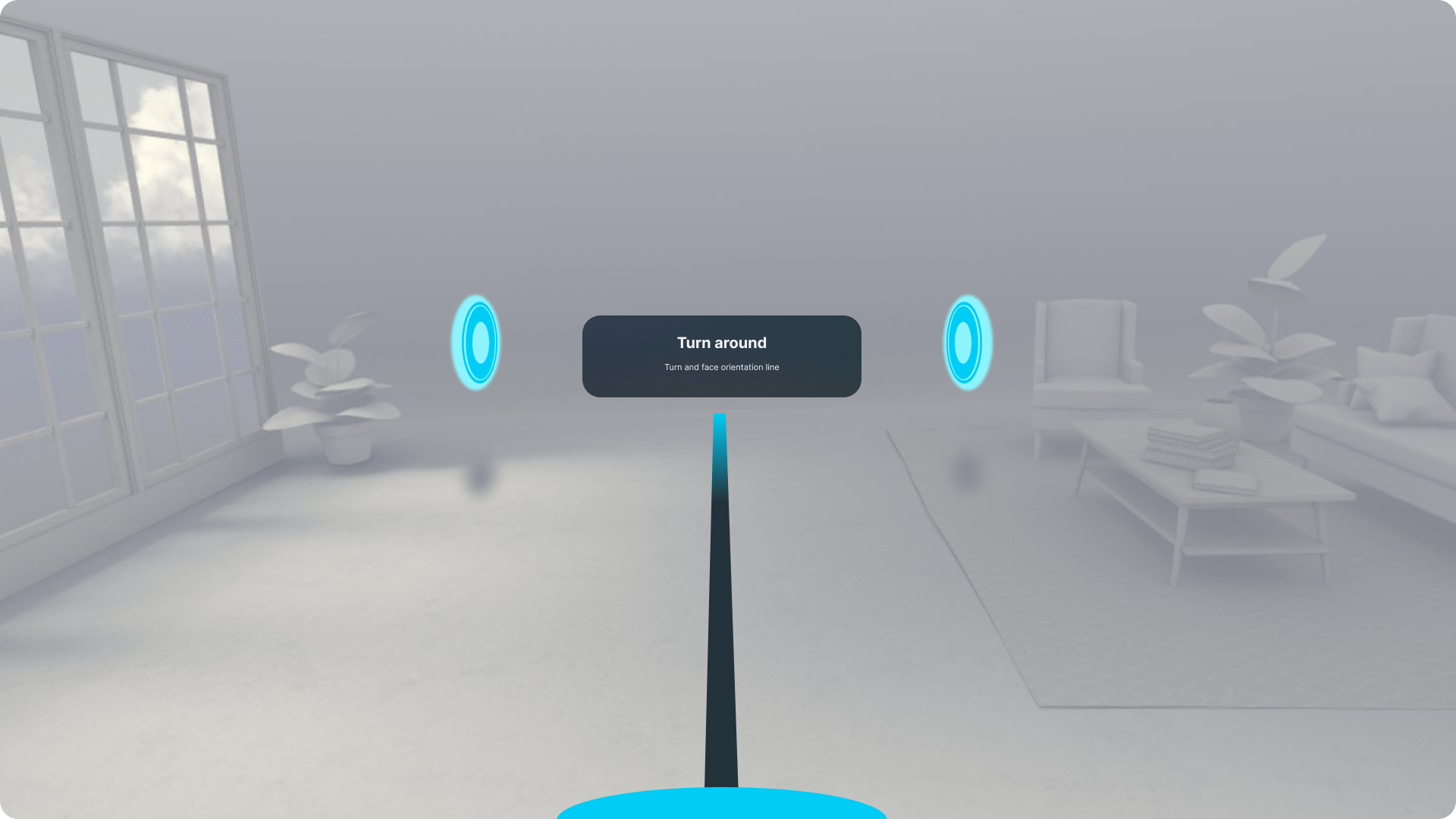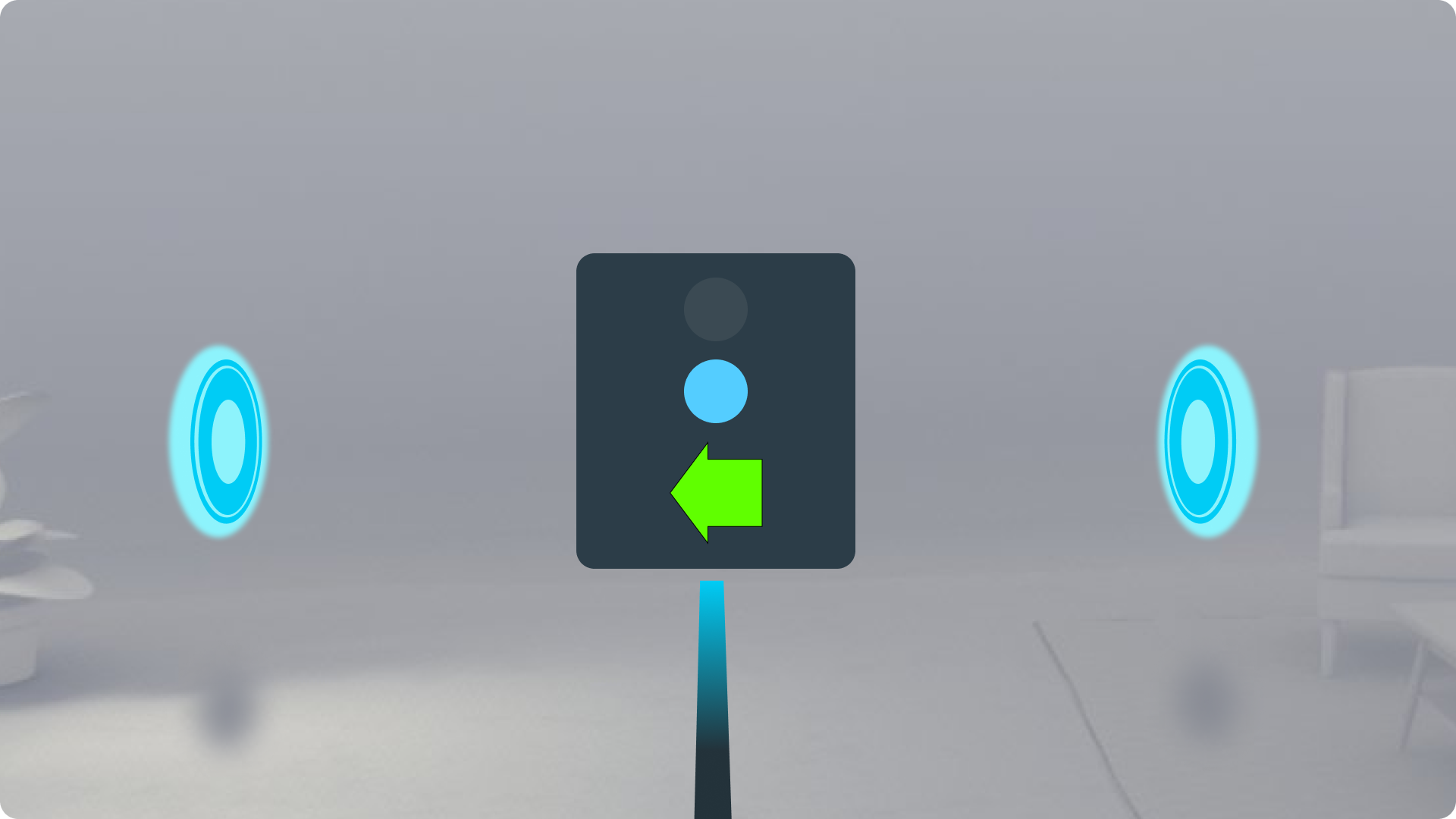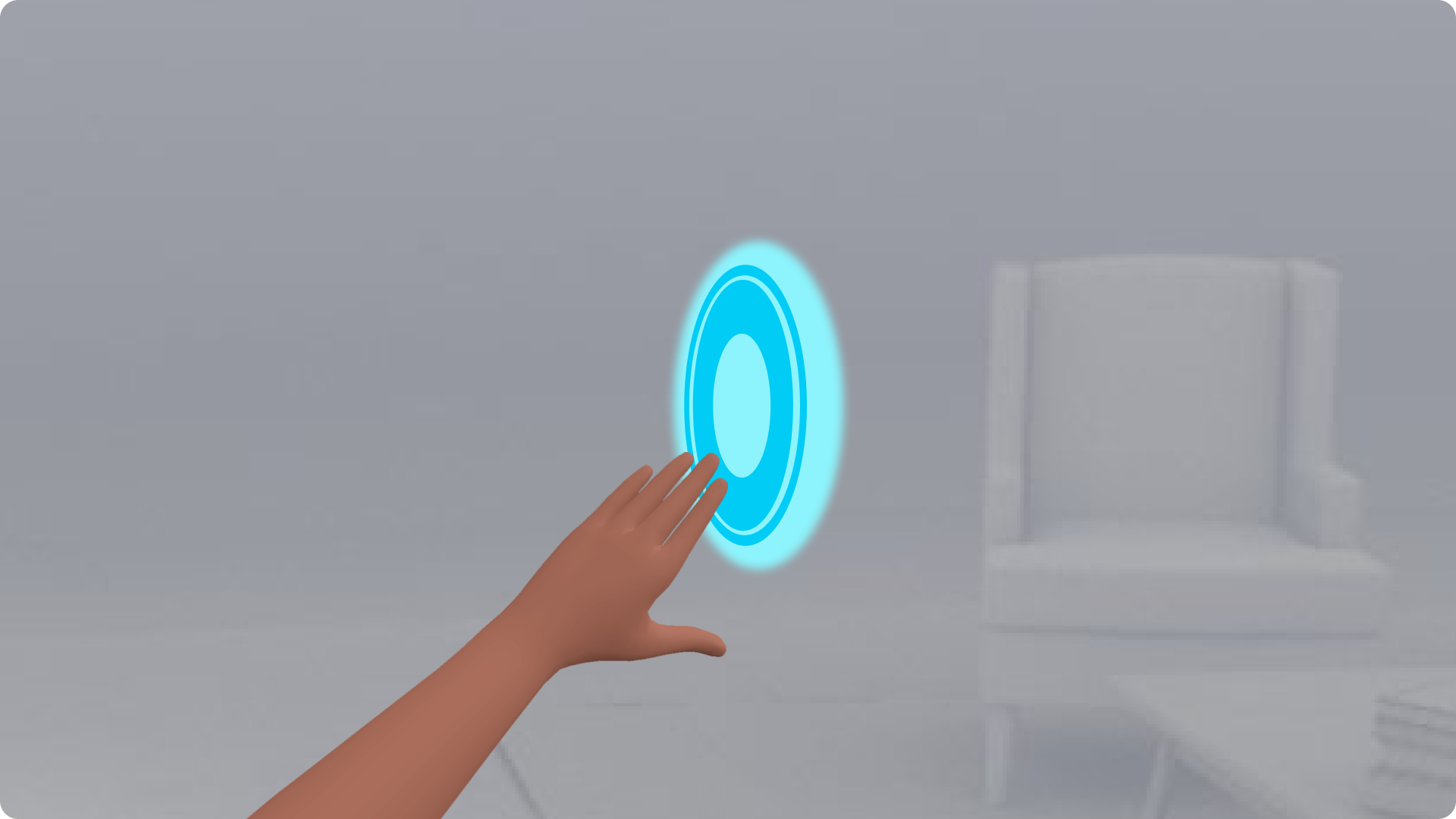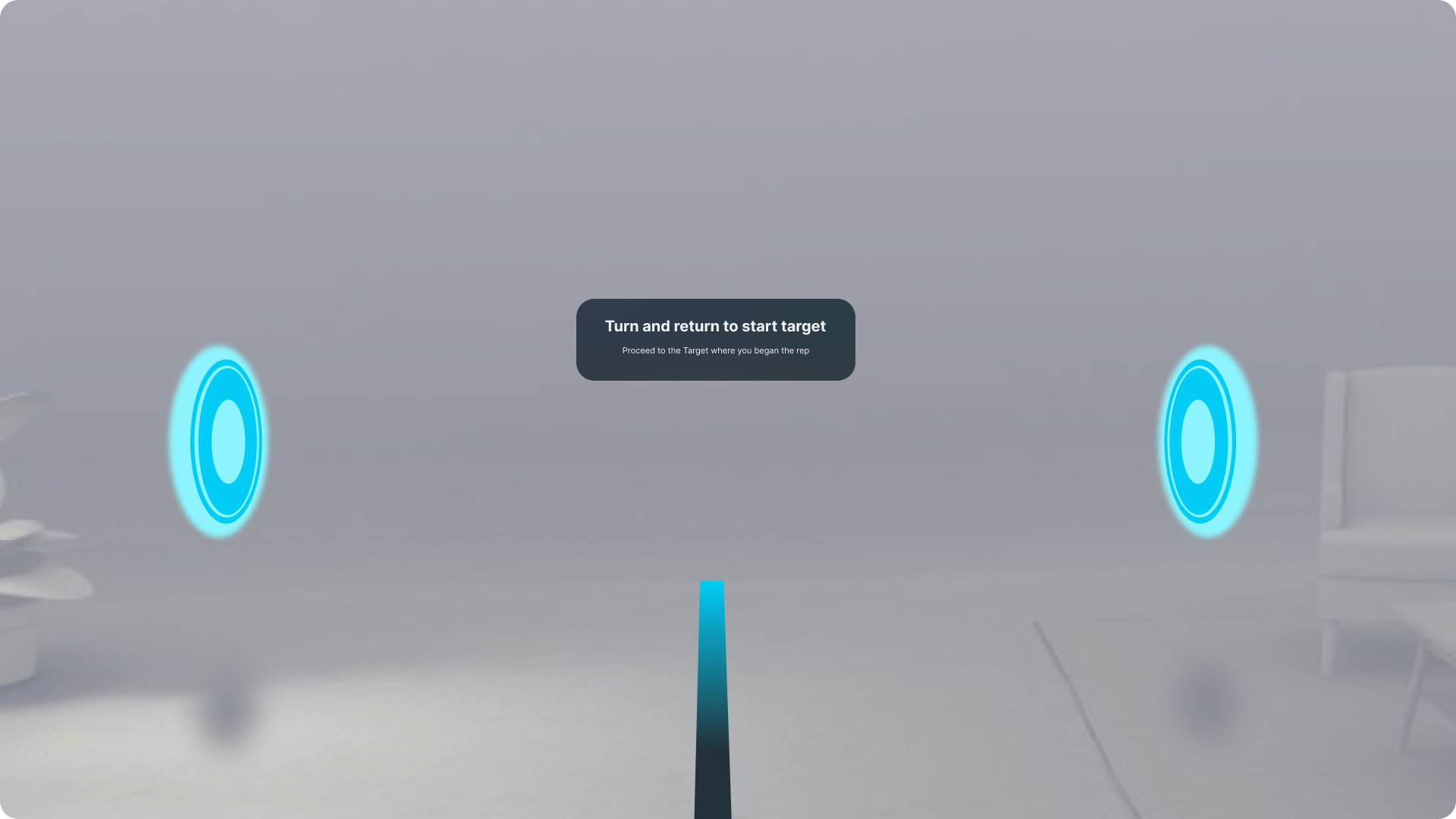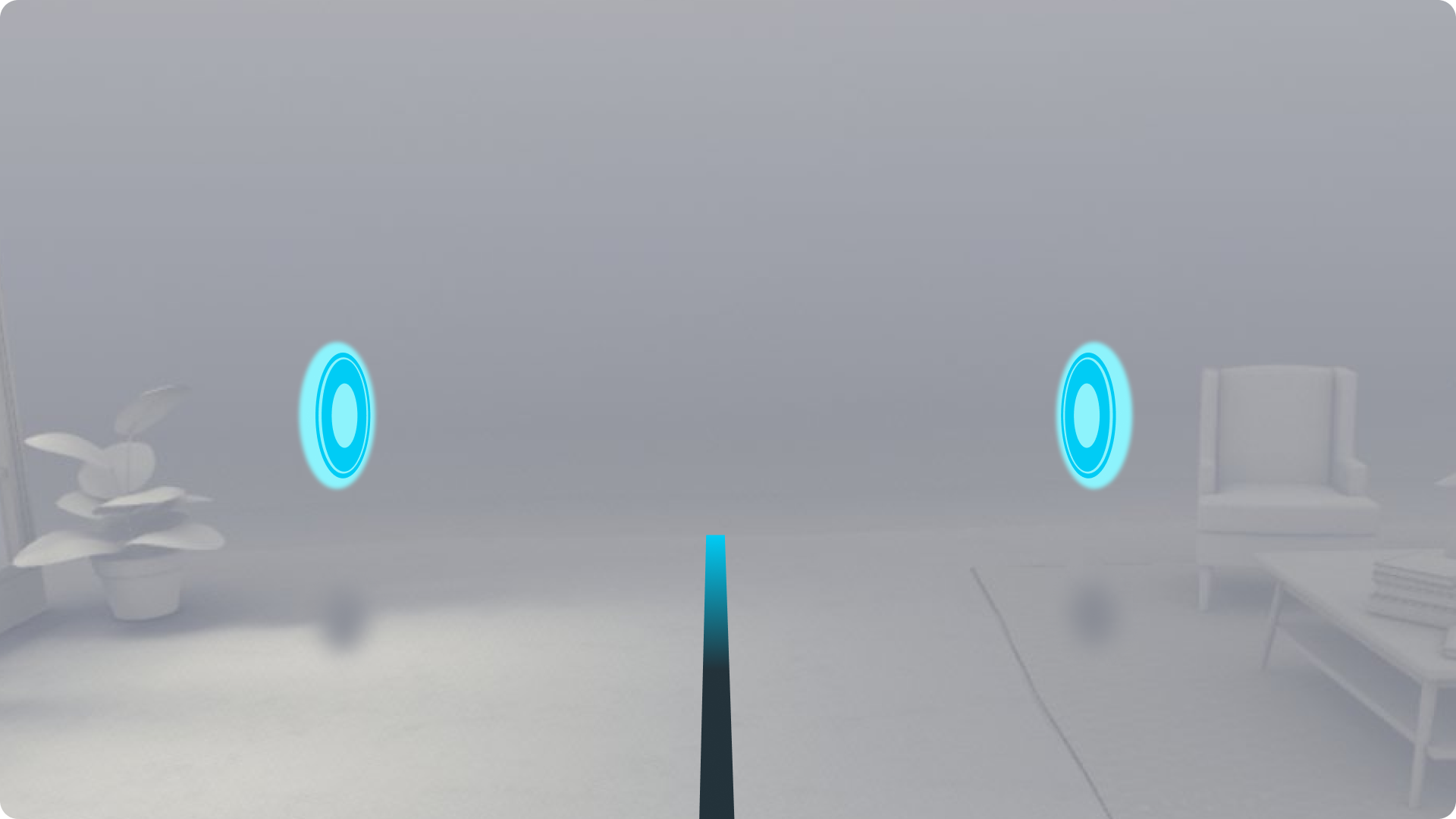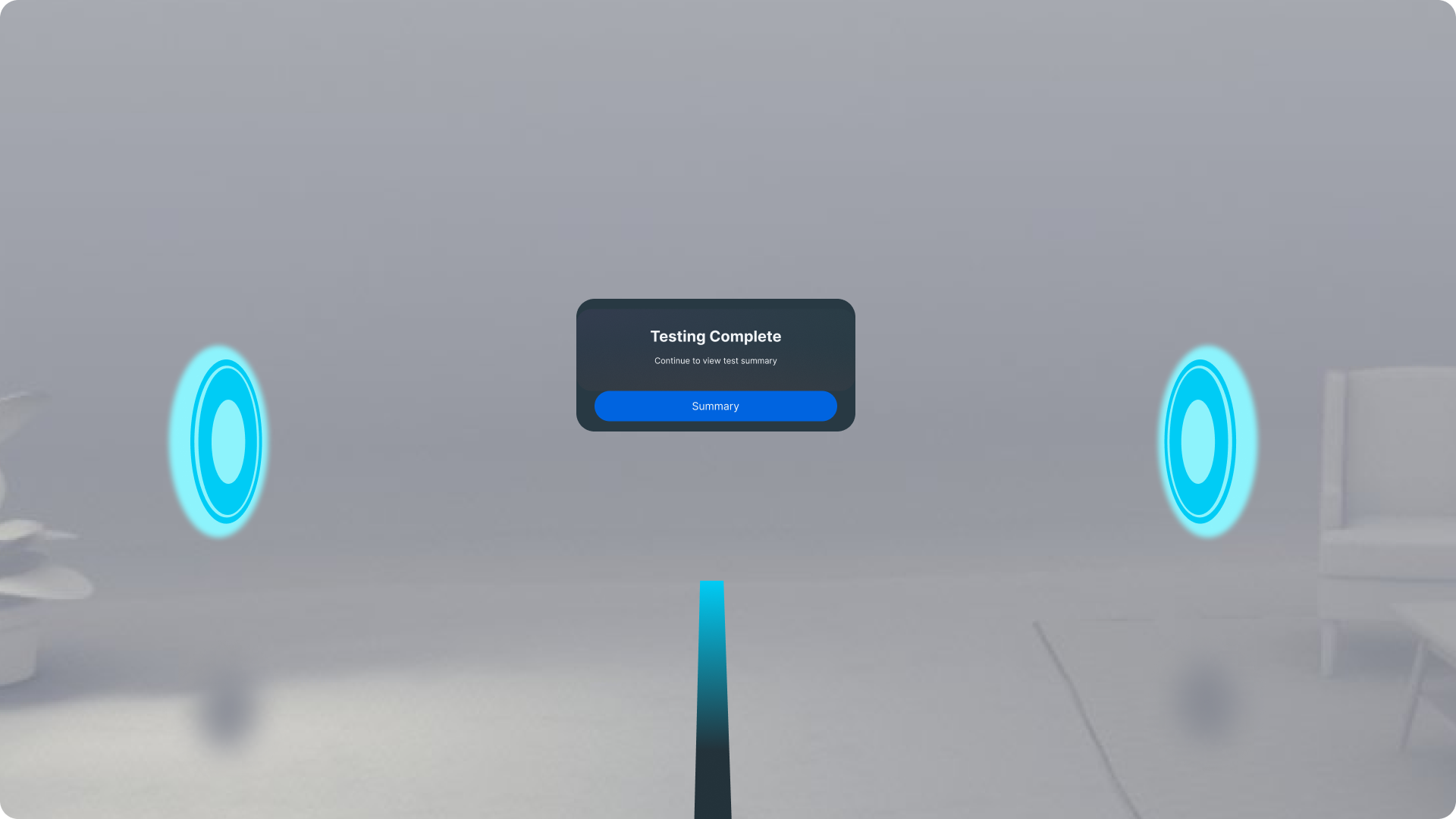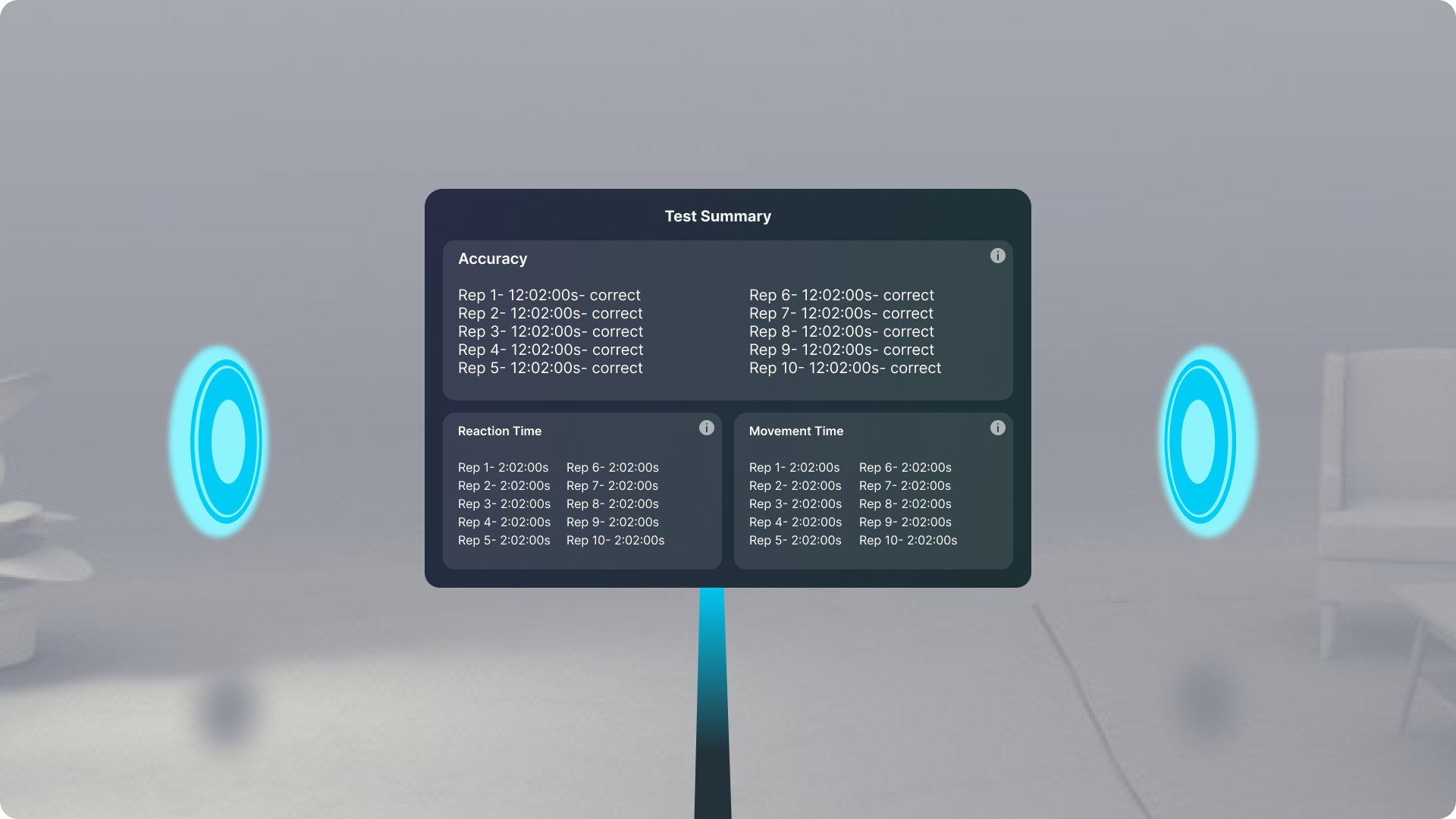

IMU-Integrated
eXtended Reality Platform

I worked on this project during my time employed by the Virtual Experiences Simulations Lab (VESL) at the University of Miami.
The VESL is both a creative and research-focussed lab within the School of Communication focussed on developing XR (Extended Reality) Projects. We collaborate with clients and other industry professional to create innovative and interactive solutions.
A Platform for Returning to Sport Testing After ACL Injuries
University of Miami | VESL
The Objective
Create an IMU-integrated AR platform to aid in athletes' rehabilitation after ACL injuries by replicating Agility T-Tests—a standardized physical assessment used to measure an individual’s lateral quickness, change of direction, and overall agility.
Tools Used
Ideation and wireframes done in Figma, handed off to development in Unity.
Timeline
April 24' - May 25'
Role
Design Lead
Client
Prepared for
Joseph F. Signorile, PhD
Zachary Ripic, PhD
Lee D. Kaplan, MD
Moataz Eltoukhy, PhD
*Current Demo Video
Utilizing the structure of an Agility T-Test, we can asses the user's ability to change direction, accelerate, decelerate, and perform lateral movements based on cognitive prompts.
This demo demonstrates a playthrough of the three main aspects of the IMU platform's functionality:
- Callibration of the environment space and scale
- Practicing symbol prompts that direct the user's action during the test
- Completion of ten test reps responding to visual prompts
View more details about each section below

The Question
How do you create an AR platform that prompts users to perform the same actions as those in a classic T-Test — one that is (a) scalable across a range of environments, (b) incorporates cognitive prompts to influence movement, and (c) records meaningful user metrics without the need for physical equipment (cones, tape, or a consistent testing space)?
The Solve
By breaking up each primary component of my question into three sections within the platfrom — pre-test callibrations, a practice tutorial, and testing — I was able to design an experience that intuitively blends user prompted spatial computing, gesure tracking, and contextual adaptability.
Pre-Test Callibrations
Before begining the test, the user must callibrate their environment to scale the experience to their current space and ensure consistant data collection during the testing. To ensure each experience is customized to the current user, they must complete three steps:
1. Calibrating the Environment Scale
The confirms where they want the test to begin, walks the length of their space or of the desired testing area, and confirms the endpoint. A line is drawn between their inputted points the user will moev between during the test. They can confirm this orientation or re-do the set up.
2. Record Natural Walking Speed
Once the user confirms the orientation line for the test, they are prompted to walk its length at a natural pace or at a pace appropriate for the test. This helps prevent users from unintentionally slowing down or speeding up during the trial, which could lead to miscalculated data. If deviations are detected, they receive a prompt to return to the recorded speed.

3. Adust Target Position
Lastly, the user adjusts two targets—visible both on the position scale and in their physical space—to the locations where they want them to appear during testing. During the test, the user will be required to “touch” the target that corresponds to each directional prompt.
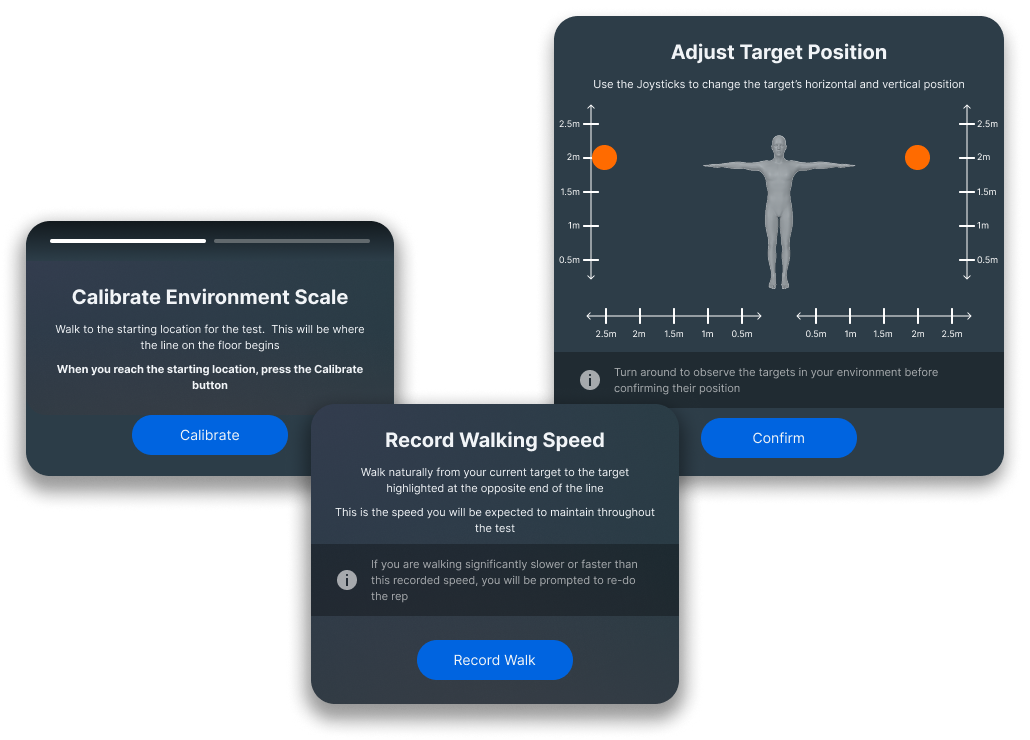
Practice Tutorial
After completing the Pre-Test Calibrations, the user is given the opportunity to practice the testing prompts. Each prompt during the test may include a combination of three symbol variations, the presence of which determines the appropriate action to take.
The prompts are designed to evaluate how well users process and respond to
movement-based instructions.
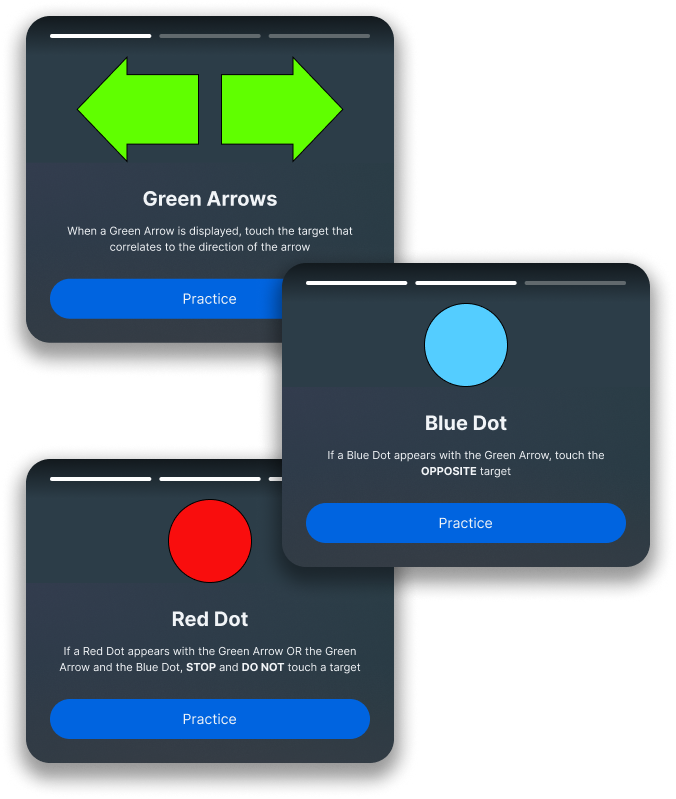
1. Green Arrows
In each testing prompt, a green arrow will point either left or right, with a 50% chance for each direction. If the green arrow is the only symbol on the prompt, the user touches the target corresponding to the arrow. There is a 1 in 3 chance that only a green arrow will appear on the prompt.
2. Blue Dot
If a blue dot is present on the prompt, the user must touch the opposite target. There is a 50% chance of getting a blue dot in the prompt.
3. Red Dot
If a red dot is present on the prompt, it overrides the other symbols—meaning the user must not make any movement or touch any target.
Testing
Now that the user has succesfully callibrated their environment and is familiar with the prompt instructions, they can begin the test.
*Testing Format: one test = 10 completed reps*
To begin, the user walks down their confirmed orientation line at the speed previously recorded. Once they reach two-thirds of the way to the end, a randomized prompt will direct the next action: touch the left target, touch the right target, or do nothing.
If a rep is interrupted by either a "Too Fast" or "Too Slow" error message, the user must restart the rep for it to count toward the testing total.
The program will collect data for Accuracy, Reaction Time, and Movement Time for each rep, and displays a summary at the end of the test. These metrics are defined below:
- Accuracy- Accuracy for each rep after a target touch, noting if the user had to restart the rep for a speed error and a specification of which, as well as if an incorrect action was taken displaying what was recorded.
- Reaction Time- The time elapsed from when the prompt spawned to the users movement.
- Movement Time- Time elapsed from when the prompt spawned to a target touch.
The targets currently featured in the program incorporate the University of Miami’s logo and color palette.
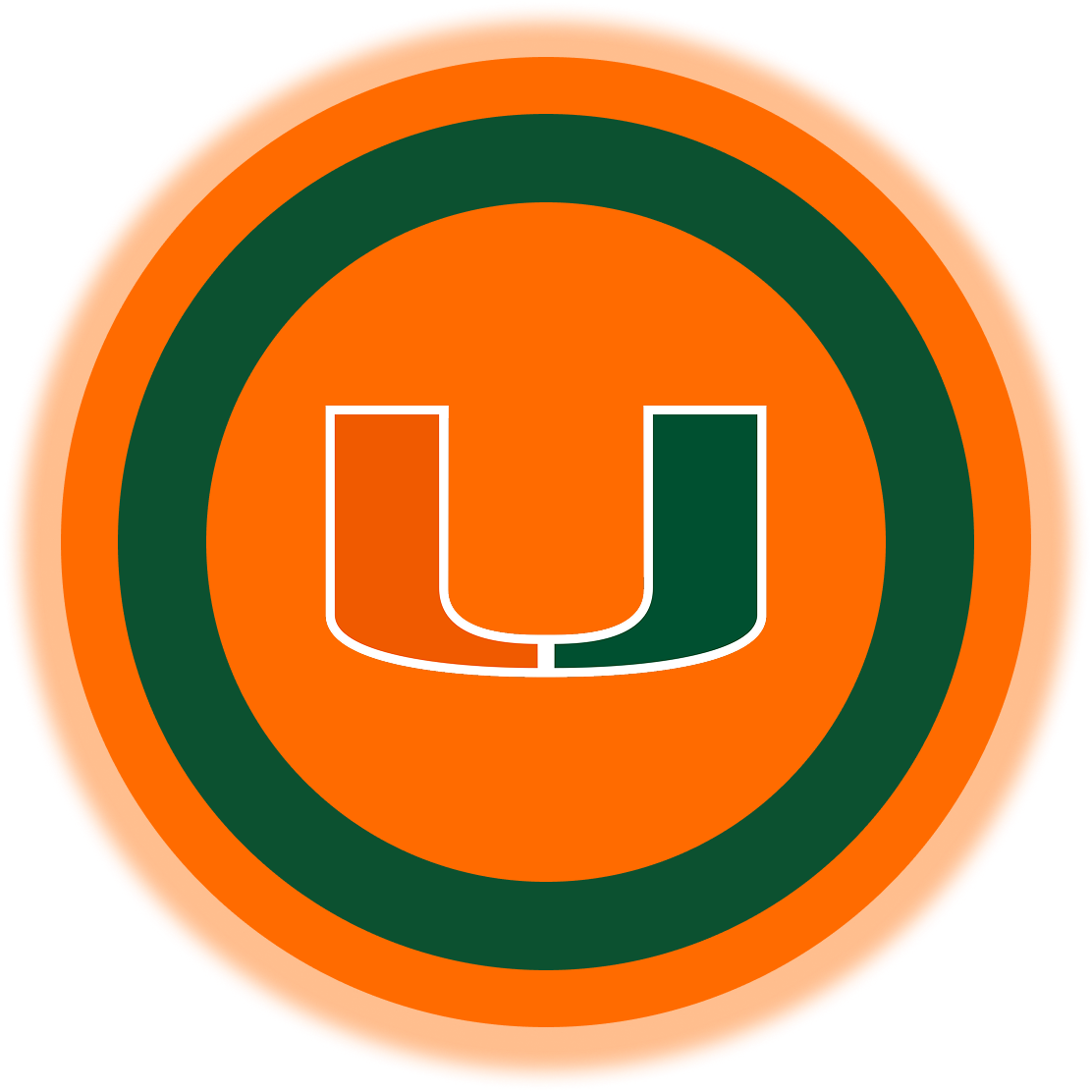
Next Steps
Moving forward, we aim to refine the program as needed to support individuals with Parkinson’s disease in their rehabilitation and physical therapy journeys.
Credits: Maggie Dobra (Design Lead), Orel Stein (Dev), Matt Liff (Dev), Mia Uy (PM)
Selected Works
